April 2019
29th April: Another hot dry Summer in the offing? Last year, the Oak trees were in leaf well before the Ashes, and just remember what last Summer was like! With Oaks shaking their leaves out, and Ash trees still standing like skeletons against the sky, is it more of the saem to come this year?
Easter weekend was amazing weather, and when I came home from a break on the Isel Of Wight, the garden had been transformed by Apple blossom, Lilacs and a whole raft of pink tulips outside the back door, and now, one storm later, there is no apple blossom to be seen, temperatures plunged to single figures again and the plots felt pretty bleak.
However, this is April , with its typical unpredictability, and things are actually growing: hope is out there!
And then there is Asparagus, not from the crowns planted recently (which have just begun to poke their first heads up above ground) but from the plants I moved two years ago when we made the path between the two plots. Most plants did not survive the move, but those that did have recovered enough to provide a few lush spears
Purple Sprouting Broccoli is at the end of its life now, and this may be the last picking. Really delicious lightly steamed and drizzled with chilli sauce. Such a high value crop!
The new plants are ready to pot on now, and I have already started work on preparing the bed for them, and other brassicas for the later end of the season
And this is what a veg box looked like when harvested in a howling gale and quickly put into the car boot to bring home... a bit muddy and a bit awry, but good to eat all the same.
There are Leeks -another crop where the next year's plants are readyy to put in, before this year's harvests are finished. Flat Leaf Parsley, Rosemary, Spring Onions & Lettuce
And Carrots. These are from the late Summer sowing, that overwntered in the ground, and as you can see, they are not all in top condition now. Some are badly split, due to uneven growth and there are are some that have slug marks on them too. Still enough good ones though to add a sweet crunch to salads
And that is the last of the harvests
On the Plots this week:
As you can see, the first Spring sowings of carrots has germinated. I weeded out the Calendula seedlings, to give them as much growing space as possible. These were self sown from the glorious bedful of them last year. There are some seedlings still in the unsown section of the carrot bed, which I shall transplant to somewhere more suitable: they transplant well before their first proper leaves have developed.
Three weeks ago, I sowed parsnip seed (Gladiator) and covered the bed with black plastic, to keep the ground moist and warm. This certainly seems to have helped germination rates, because there are two rows of seedlings now uncovered, some of which still have the seed coat attached to the cotelydons (seed leaves). They were very yellow when I uncovered them of course, due to lack of loight, but I uncovered them before they became leggy, and greened up within a day or two.
Despite the sow-by date on a packet of seeds from lastyear being 2020, there was not a single seed germinated, so when we growers are told to make sure we use fresh parsnip seed, this is advice worth following
The empty strip along one side gives me space to grow the Syrian Black Broad Beans I sowed in modules this week., assuming these grow of course!
The early brassicas are growing away now: pointed Cabbage Merlin, Cauliflowers, Chaussiron & All Year Round, Calabrese Arcadia and an un-named Red Cabbage. They are all covered by insect netting already, as this also protects them from pigeons.
The PSB, Cordesa Savoy Cabbage and Tuscan Black Kale are ready to pot on now, and the Perennial Daubenton's Kale & Five Star Perennial Cauliflower are big enough to plant out in the ground,hopefully in this coming week.
The Insect Hotel put up last Summer is suddenly rife with activity. The bees move so fast it is difficult to phtograph them, but I did manage to take a couple this afternoon. The general technique seems to be for them to carry a ball of pollen/nectar into the tube, turn around to lay an egg in it, fly off to get some mud, seal in the egg plus food source, and then begin again until the tube is full. You can see some tubes are already fully sealed, and there were several bees busy at the same time, using different tubes of course, as they are solitary bees. I think these are Red Mason Bees.
My Son-in-Law gave me some tomato plants this week, and I planted them in the tunnel as there is not enough space in the greenhouse at home. So far they seem to be alright, even though the night time temperatures are a little low.
I did notice though tahat there are plenty of Malabar Spinach plants growing from seeds that fell to the ground last year, so it is obviously warm enough for these tropical plants to germinate!
At home, I sowed Winter Squash seeds in pots. Several of the packets of seed are quite old now, so I did sow a few extra. It'll probably be a case of all or nothing: Ute Indian, Butternut Hercules, Ichiki kuri, Queensland Blue, North Georgia Candy Roaster, Kakai and Cornell's Delicata .
Climbing beans are also sown now in modules: Runner Bean Celebration, Helda Beans Algarve and Golden Gate and some Greek Gigantes
and as I mentioned, Syrian Black Braod Beans, plus an Indian annaul sorrel, Chukka Koora.
Here to end, is the hawthorn hedge we planted along the rear of our seating area three years ago. It has really shot up, and from having oen tiny clsuter of flowers last Spring, look at it now! It smells amazing and the bees absolutely love it.
Jobs to do this week, as well as watering if the dry weather continues, are to plant out the sunflowers and leeks and finish preparing the big brassica bed, hopefully moving the cage over it as well. Sweetcorn needs sowing too, as well as Coriander, Pak Choi and more Radishes!
And maybe I'll find time to cut the grass too!
My contact email is
info@alittlebitofsunshine.co.uk
Comments and suggestions are most welcome, and I shall reply as soon as I can
And if you'd like to know more about Harvest Monday, look at
15th April - The Hungry Gap is upon us alright, between the end of overwintered crops and the beginning of the new year's fresh harvests. Ours are mainly from the polytunnel, where the extra protection extends the growing season at both ends.
The photo above shows a selection for this week's Harvest Monday, which made a really tasty salad: Perpetual Spinach, Chard, baby leaves of Scarlet Kale, Spring Onions, Wild Garlic leaves, Flat Leaf Parsley, Spearmint, Chives, Blue Moon Radish, late sown Carrots and Calendula flowers. Later in the week we repeated the salad, adding in Rosemary flowers in place of Calendula, and ribbons of young Sprouting Broccoli leaves , flower buds of Scarlet Kale and a Winter Lettuce
There are still leeks to use.. tonight in a stir fry with chicken, Spring Onions,Peppers from the freezer , and Toamto passata from the store. And of course, Rhubarb is still at its best
At the weekend we had a huge Rhubarb Crumble, made by my ten year old grand daughter, with a minimum of help. The topping included chopped walnuts and powdered ginger, and it was very tasty indeed. Well done, Pearl! Her elder sister cooked lasagne, which included carrots from the compost-box in the garage, and some of the stored shallots. Thank you Poppy, it was delicious!
The eggs are a mix of those from my daughter's chickens, and some from our friends' birds, in exchange for Blue Moon Radishes. It is great to have these friends as our new plot neighbours too
On the plots this week:
The dry weather has given time to get up to speed with the jobs. There are some new strawberry plants, put into a large temporary raised bed, which came as a free gift with the plants. It did not include the compost of course, but was very welcome regardless.
This is on the bench at the back of our covered area, where it will be reasonably sheltered but still easily accessible to pollinating insects. I shall net the fruit to stop birds or small rodents helping themselves to fruit, once it is starting to swell. Right now, the plants are growing new leaves, but as they have been cold-stored all Winter, I am sure they will soon bulk up now they are planted
Abi had planned to grow a specially attractive variety called Blue Belle in a deep container, to try to avoid damage from wireworms or slugs and with skins unmarked by scab. I came across this huge pot, and decided it might be useful for for potato planting. There are five tubers planted there, which I think should be fine, given the volume of the container. It is just under half full of compost: 130 l so far.I shall ensure they are well fed but with a lime free fertilser (Lime encourages scabby skins to develop) and look forward to the Grand Reveal in early September
The first lot of peas are now in the ground. These were initially grown in modules in the greenhouse before being hardened off. The closer plants are Terrain, which should flower before the further ones, Hurst Greenshaft. I took off the spent pea seeds from the roots, to try to make them less attractive to mice. A bit of a faff but worth the effort I think if it measn I get fresh peas to eat in the end
The Beetroot seeds are now sown (Thank you to Kitty for your help): One row each of Boltardy, Cylindra, Chioggia (striped with rings of pink and white) and Boldor, which is an orange variety. There is enough space for a follow-on sowing in a month or so too
I soent just over three hours today planting Dahlia tubers that have overwintered under the staging in the greenhouse. Some were a bit shrivelled, but will still hopefully grow, although the majority did have tiny shoots beginning to develop: a sure sign they need to be in the ground.
Dahlias are tender plants, but by the time their shoots are above ground, the last frosts sould be over... or I shall end up putting cloches over them of course
I planted 30 tubers in all, although I have a few more left at home that will be going into pots and then grown in the garden
INmmy attempt to reduce the number of beds in annual rotation, I planted up one of the very long beds on #145 solely with Dahlias, which I hope will look eyecatching, as well as providing plenty of flowers for cutting. The others are planted individually at the ends of beds on both plots
In the polytunnels this week:
It was so cold that the potato plants in the polytunnel were caught by frost, and patches of foliage were damaged. It took me by surprise, so I hadn't put cloches over them. My new max-min thermometer showed that the lowest temperature in the tunnel was -1.6C, which means it was roughly -4C outside.
The seed-sown onion plants are now in their bed. They are pretty hardy so I hope they will not take too great a set back from cold nights
The PSB and Kale plants are being pulled out one or two at a time as they are mainly past their best, and they then go to feed the chickens
At home, the PSB plants from the greenhouse are sitting in the arbour where they are safe from pigeon-pecking. They do not need extra heat, and will grow into stronger plants with cooler conditions. I shall plant them in individual pots next week. Disappointingly, even the second sowing of Couva Penca seeds failed, as did those of the two friends attempting to grow them too. Can't win every time, and there will be plenty to eat without them. I woul have like the chnace to try them. I might see if I can trace some fresh seed...
The greenhouse is still crowded, but I am pleased to say that the Climbing French Bean plants that pruned back are looking fine. Given how cold the nights have been, I am very glad I didn't chance planting them in the polytunnel
One of my favourite flowers are Cowslips. When I was a child these all but died out in the local countryside, and my Dad grew some from seed so that he could nurture them in his garden. He gave me some of the plants, and all those in my garden ara descendants of those originals from Dad, so are even more precious. They spering up between the paving slaabs on the rear patio, and in the bonsai pots, as wel, as around the base eof the Golden Delicious apple tree that used to grow in his garden. Abi & I brought the tree to Reading on the train, and it came to the house we later moved to, on the roof of a friend's car It must be at least 50 years old and it still produces gorgeous late apples. We always used to let our son pick the first one off the tree on his brthday in early November, and the apples store really well. There are still some in a tray in the garage that are perfectly good to eat!
And the cowslips are gradually returning to the wild too, with huge patches seen on roadside verges and banks now, which is lovely to see
Next week it will be time to open up the packets of squash seeds and decide which I shall grow ths year, and to plant the sweetcorn seeds too. A little later than most years, but I am trying not to sow things so early that they are crammed into the greenhouse, unable to be planted out because of the cold, getting pale and thin in the process.
At least that's the plan!
I'll be back next week so you can see how the plan is going...
My contact email is
info@alittlebitofsunshine.co.uk
Comments and suggestions are most welcome, and I shall reply as soon as I can
And if you'd like to know more about Harvest Monday, look at
8th April - " One swallow doth not a Summer make?" according to Aristotle, and how rght he was. I saw three swallows today, swooping and diving around on the local hillside, whilst I shivered even though I had my jacket on. The birds are back in England very early this year after their Winter in Africa, but whether their return is any indication of weather to come or not remains to be seen
Despite the cold wet weather, I feel optimistic that the plots are more or less up to speed again. I did have some help from one of my nephews, who travelled over on the train on the wettest day of the week to help me plant potatoes... thank you Khalid!
Harvest Monday starts with a new vegetable to the table: Lettuce. This is Winter Density, an old English variety which is very hardy, and copes well with a minimum of protection from cold and wet. These are growing in the polytunnel and are now hearting up. Lovely to have the first lettuce of the year!
There have also been large harvests of Mustard Leaf, Perpetual Spinach and Wild Garlic leaves (Khalid took lots home too!)
All three of these are starting to grow flowering stems, which is kind of the beginning of the end for the mustard and spinach. The mustard flower stems are very tasty in stir fries whilst still in bud, similar to skinny Sprouting Broccoli shoots, but the Perpetual Spinach is a relative of beetroot rather than a true spinach, and their flower stalks are thick and tough.
The flowers of Wild Garlic are edible though and are decorative as well as delicious in salads. I was interested to see that you can actually buy Wild Garlic now, and there was even a recipe for pesto using it in one of the Sunday magazines this week. A few years ago it seemed few people had even heard of it! Although received wisdom is that the flavour of the leaves is past its best once the flowers open, I find that the younger leaves are still perfectly good, and carry on using these to make the most of what is quite a short season
Purple Sprouting Broccoli is still going too, although the stems are now much thinner as they come to the end of their usefulness. The young top leaves are tender still, so I shall be picking some of these in the coming week.
On the plots this week:
As I said, this week has been a sort of turning of the corner on the plots. Most of the beds are now uncovered and planted up. The second early potatoes (Kestrel and Maris Peer) and the maincrop potatoes (Setanta and Pink Gypsy) are planted. It was really apparent this year that it has been worth covering the beds, as the soil was warm and workable under the plastic, and the tubers will get off to a good start. As with the earlies, I have reverted to my old planting method, planting in holes organised in rows; earthing up the new shoots as they appear above ground will be easy. Something different this year though is that I added shellfish compost to the soil, which contans chitin. Chitin is reported to help with moisture retention and also supports soil bacteria and so increase disease resistance in plants. I had the chance to buy some at a modest cost, so thought it was worth trying. After all, the soil is the most important resource we have, and we expect it to work hard for us so a bit of care for the soil organisms has to be a good idea.
Last week I talked about the issues with germination of parsnip seed. The recent heavy rain did give the ground a good soak prior to me sowing the seed, which was good. One packet was Gladiator ...new seed... and one was an unopened packet of Tender & True from last year. I shall be interested to see what difference there might be in germination rates. We are always told parnip seed needs to be as fresh as possible, so we shall see. If it is only the Gladiator that grows, I shall still have plenty of parsnips!
I have covered the bed again, and will be checking every few days to see when germination begins and then I shall take off the plastic.
The strawberry plants have started growing again and it shouldn't be long before flower buds are visible. There is no sign so far of the damage to the foliage that was happening last Autumn.
The large triangular flower bed , which is visible behind the strawberry table, is weeded now and the Verbena bonariensis plants dug out from the edges. I replanted three in the middle, and gave away the remaining ones to other plotholders. This provides space where I can put in some of the plants I am growing for cut flowers, and easily reach them too.
Carrots are now also sown, although the prep for this took hours. The frame to support the netting had rusted through along the base: thin canes and duct tape seems to have done the job for now. Taking out as many stones as possible from the soil, incorporating sand and a sprinkle of seaweed meal before tamping the surface down lightly with the rake head was a long job, but worth the effort to try to grow carrots that are a decent shape.
I sowed four rows, as thinly as possible, two of Nantes 5 and two of an F1 variety called Primo. It was very noticeable that there were twice as many seeds in the open pollinated variety as the F1. Are these worth the extra money? It should be easy to tell at harvest time, from the size of the crop and from the taste
At long last, the remaining Asparagus crowns arrived, so now six Pacific Purple and six Gijnlim are now resident in their new bed. Plenty of sand and seaweed meal have been added to the soil, and the plants were sat on a ridge with theo crown about 4-5cm blow the surface and their long leggy roots draped across sideways. They were then mulched with a 3-4cm layer of compost. In the photo, only two sections have compost added, as I need to dig more out of the bin for the middle section.
The crowns are two years old, so in theory a few spears could be harvested next Spring, but the crowns need to bulk up a bit before a proper harvest will be possible. As they ought to be productive for around twenty years, waiting for the first harvest will be just fine
In the polytunnel this week:
The mangetout plants are planted at the base of the netting so that they have support as they grow. I took off the spent pea seeds from the base of the plants, to make them less attractive to passing mice. It is a fiddly thing to do but if it means the plants survive, it is worth it.
And the broad bean plants are in full flower. Their scent fills the air, especially when the sun is shining to warm things up a bit. I am leaving the door wide open while I am at the plots, but have not seen any bees making ther way in yet. An article written by First Tunnels describes in some detail how to grow broad beans under cover, and does not mention insect pollination at all, so fingers crossed they will set some pods
At home in the greenhouse, the cucumbers, cornichons and melon seedlings are now enjoying brighter light than they had in the propagator on the windowsill indoors, and the tomato and malabar spinach seedlings will be joining them tomorrow.
Needless to say, the geenhouse is groaning at the seams: the modualr tray of Spring Onions will be off to the polytunnel on my next visit.
Comments and suggestions are always welcome, and you can contact me on
info@alittlebitofsunshine.co.uk
and if you would like to read more about Harvest Monday, hosted by Dave, then look at
www.ourhappyacres.com/
1st April - Clocks have changed, Spring is Sprung and the sun is shining. An extra hour of daylight at the end of the day means more time at the plot or in the garden, which is just as well as things are starting to feel a bit frantic now
We'll start with Harvest Monday. The photo above is not an April Fool's prank picture, but two of the large Winter Radishes I pulled up this afternoon. These are from the row of Red Moon & Blue Moon I sowed in the Autumn. I had forgotten what they were called until I found the label!! I bought the seeds in a Summer sale, luckily two packets, as I shall certainly be wanting to grow these again. They do look fairly unpromising from the outside but as well as being beautifully coloured inside, they taste fresh and delicious in salads and Winter stir fries
Next up are Spring Onions, which were sown last Autumn and overwintered in the polytunnel. I find that if I sow a few seeds per module, they grow together to fill their compost with roots, and then it is easy to plant them out as a block.
I started growing them like this when we got our plot 9 years ago, because there were so many weed seeds in the soil it was hard to spot the litle thready onion seedlings amongst them. Now of course, the soil on that plot is a dark, crumbly loam and probably Onion sedlings would cope with direct sowing. However, the added advantage of sowing in modules like this though is that i can get a crop ready to plant out as soon as a space become vacant and this helps to have a succession of Spring Onions throughout the year.
Here is the batch sown in mid-March, which will be planted in a row outside later this month. They look pretty shabby right now, because the temperature in the greenhouse had shot up today, despite having the door open, and the comopost had dried out a bit. I sloshed some water over them with more enthusiasm than sense, hence all the boggled looking compost. They will be fine though.
Carrots just keep on coming. I had to dig these up because their bed will be used for maincrop onions, although I did leave one row at the end of the bed for later use. You can see there are lots of hairy roots, where they are starting to grow again. Carrots are biennial plants, and in their second year grow a flower stalk, hence their new growth spurt. I shall leave a few of the remaining row though, as hoverflies adore their umbelliferous flowers. Their larvae consume aphids, so hoverflies are always welcome!
Most of this bunch of carrots is destined for Cream of Carrot Soup
The carrot bed was also full of Flat Leafed Parsley plants, which also had to come out. A large carrier bagful of leaves was a lot to deal with, especially as I do have lots more plants growing elsewhere on the plot and in the polytunnels. Pesto made with it was good though.
Their roots went down very deep, and needed digging out, as pulling just made them break off
Sometimes people tell me that parsley is difficult to germinate and does not transplant well. . I always leave some plants to flower, which they do in their second year, just like carrots (They are in the same family) and the resulting seeds scatter far and wide. These self sown seeds come up all over the place and small seedlings can easily be moved to where I'd prefer them to grow. They carry on producing leaves all through the Winter too, which are always very welcome. My original plants came from dividing a potful bought in a local supermarket about five years ago, reduced to 50p because it had wilted slightly. Excellent value, I reckon!!
Here is some of this week's Purple Sprouting Broccoli, which is still going strong. Even the plants in the polytunnel which I thought had finished cropping, have grown a few more spears. there was more this week than I needed, so I open froze some, and then packed it flat in a bag. This way, I can take out the amount I need without having to hack through a big frozen block of broccoli
Other harvests have included Leeks , Perpetual Spinach and Rhubarb... I really must get around to making some more Rhubarb and Ginger GIn.....
On the plots this week:
I have made the most of the opportunity to weed this week, as the weather has been dry and mild. Weeding on wet soil makes my gloves horribly muddy and the bucket gets very heavy. I tackled all the flower beds on #145, and they look much better now. I plan to re-site the Verbenia bonariensis surrounding the edges of the triangular bed into the middle, as it is so scratchy that to stretch past it makes it very difficult to cut flowers growing further over.
Maincrop Onion Sets are in: Turbo on #146 and Stuttgarter on #145. The soil is very dry so if there is no rain in the next few days they will need some water.
Both plots are looking much more purposeful. It makes so much difference having taken out most of the weeds, and with some beds now planted up with new crops again
The earlier flowering fruit trees are in full bloom, and the branches are absoutely laden with blossom. I hope that means there will be good harvests to come
Last year I had all sorts of problems getting Parsnip seeds to germinate, and so it seemed, did lots of other growers. I have never had an issue before, but the unusually dry, warm weather didn't suit them, with tiny seedlings drying out and dying as they pushed out of their seed coats, so..
... a new plan. I read up on how gardeners of old used to help germination along, and one favourite was to water the ground, sow the seed, cover very lightly with soil and then put a plank of wood over the row until germination begins. On the face of it this sounds a little weird, but it would maintain a consistent level of moisture in the soil, and also provide some insulation from frosts too if needed. I know parsnips are hardy, but seeds are small and light, and the tap root needs to be able to grow away quickly, which is cannot do in dry soil, as it curls up and dies.
OK. Now for my version: prepare the soil as a seed bed, without weeds or obvious stones, firm with the back of a rake, so it is not too fluffy, give it a good soak and cover with black plastic overnight, so that the water can soak down through the soil. (Done this bit)
Then the next day, make shallow drills, soak these and sow the seeds, three per station about six inches apart. Cover with soil to 1cm depth, tamp down gently so that there is good contact between the seeds and the soil, then replace the plastic cover (This is for tomrrow)
Now in theory, parsnip seed germinate in about 3 weeks, but in warm soil (and right now the soil is certainly warm enough) it could perhaps take 2 weeks. I shall be regularly checking for seedlngs, and will then remove the cover, keeping them carefully watered when needed. I'll keep you updated.
In the polytunnels this week:
Weeding has been the name of the game, plus of course watering. Cherry Belle Radish seeds sown in the ground are up, and the Little Gem lettuces are all growing well. Strangely, the seed I sowed at home has not germinated. It was quite an old packet so I have thrown the rest away and will re-sow using fresh seed
No sign of the carrots sown in the big box yet, but they have only been in for a matter of days. The surface of the substrate dries out very easily, so I am going to rig up some shade netting for them, as well as regualr spraying with water to keep them moist
The extra early potato haulms are growing quite quickly now, and the sweet pea plants have very sturdy stems making their way up the wigwam with the help of some string. Borad beans are flowering... opinions vary as to whether they will set beans without the aid of bees. This variety (De Monica) is supposedly self fertile and will crop well under cover, so fingers crossed as there are lot of flowers out now
The other tunnel is where the tomato plants will go this year, so I am gradually clearing spent crops so that I can add a hefty amount of organic matter to the soil and allow it to settle for a few weeks
At home in the greenhouse, space is already at a premium. The mangetout plants are well and truly ready to plant in the polytunnel, and are being hardened off now. One issue with plants grown in the greenhouse is that they are protected from the strength of the sun's rays by the bubble plastic, so when they go out in the garden, they are far too soft to cope. I have to put them somewhere shady in the garden to begin with, to save their leaves being damaged. The leek plants are outside full time and seem to be alright now. Off to the coldframe at the plot for them this week, along with the perennial brassicas
The Couva Penca seeds failed to germinate so I shall try a second sowing this week, perhaps keeping them indoors rather than in the greenhouse. as it will be cooler during the day.
Most of the flower seedlings are now developing their first proper leaves. Hopefully they will continue to grow on in their modules for a while yet.
One of the flowers that has been a real,success this Spring are the Primroses. On the plots lots of wildings appeared,, all coming from a few small plants a friends gave me, transplanted from the verge outside her plot. These have really bulked up now, to give beautiful clumps settled in the grass and in a shady bed on # 146.
This coming week I plan to sow the seeds of the tomato varieties to grow outside, pot on the seedlings of the varieties that will be planted in the polytunnel, plant the mangetout in the polytunnel, sow the parsnip and carrot beds and plant the remaining seed potatoes. Say it quickly, it doesn't sound too bad!
I shall be back next Monday, hopefully will lots more done, including perhaps the first harvest of lettuce from those that overwintered. Maybe the asparagus crowns will arrive too
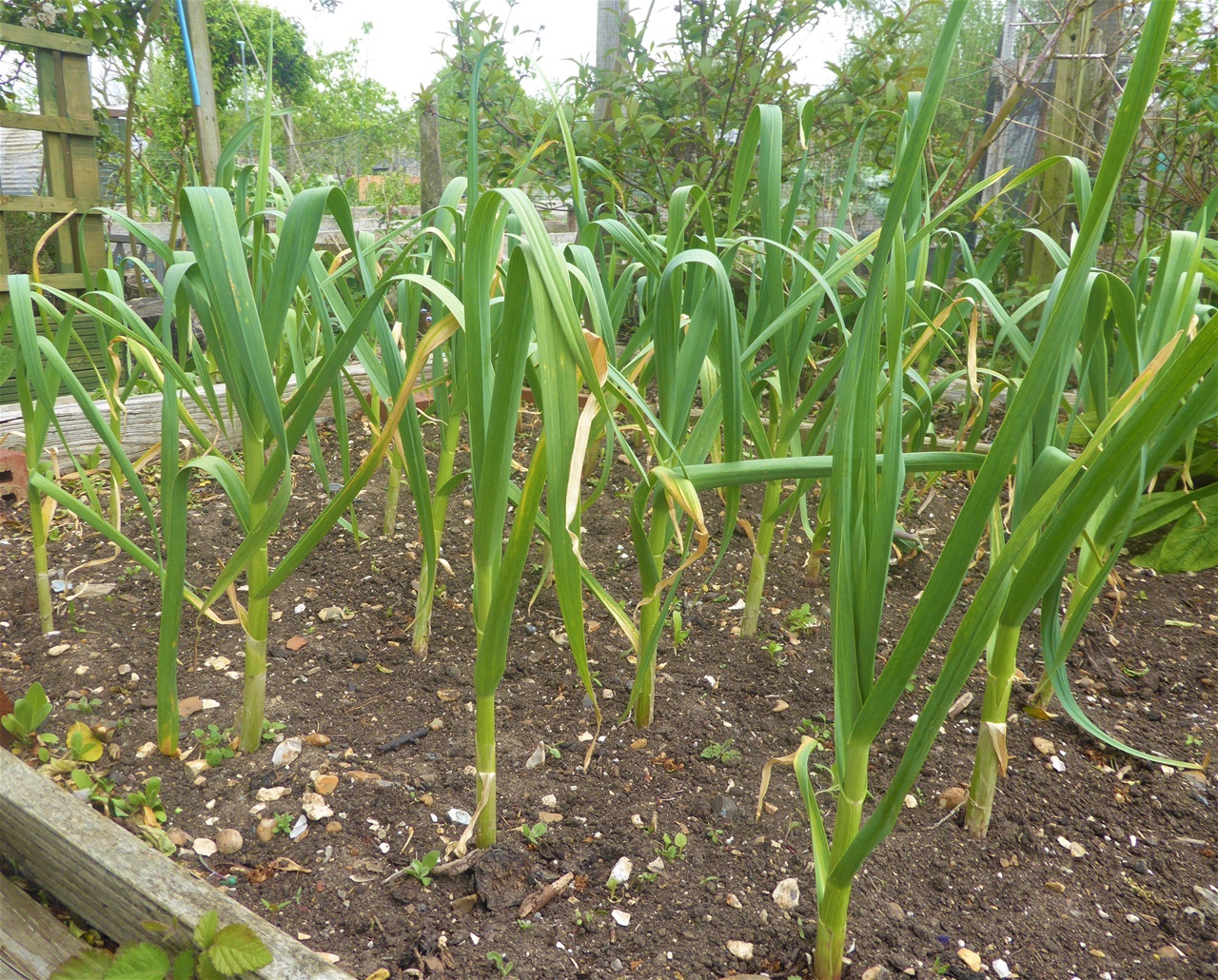
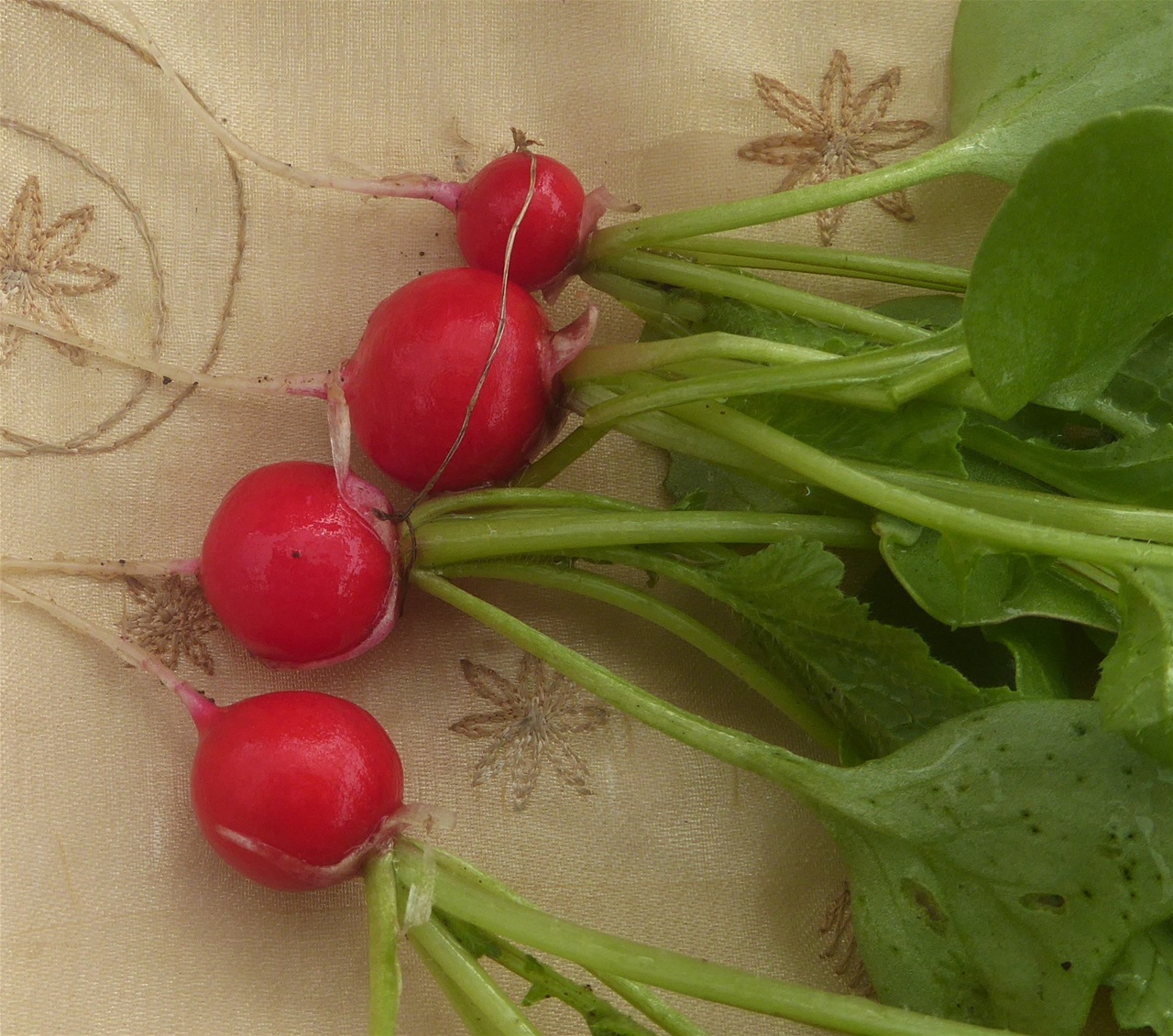
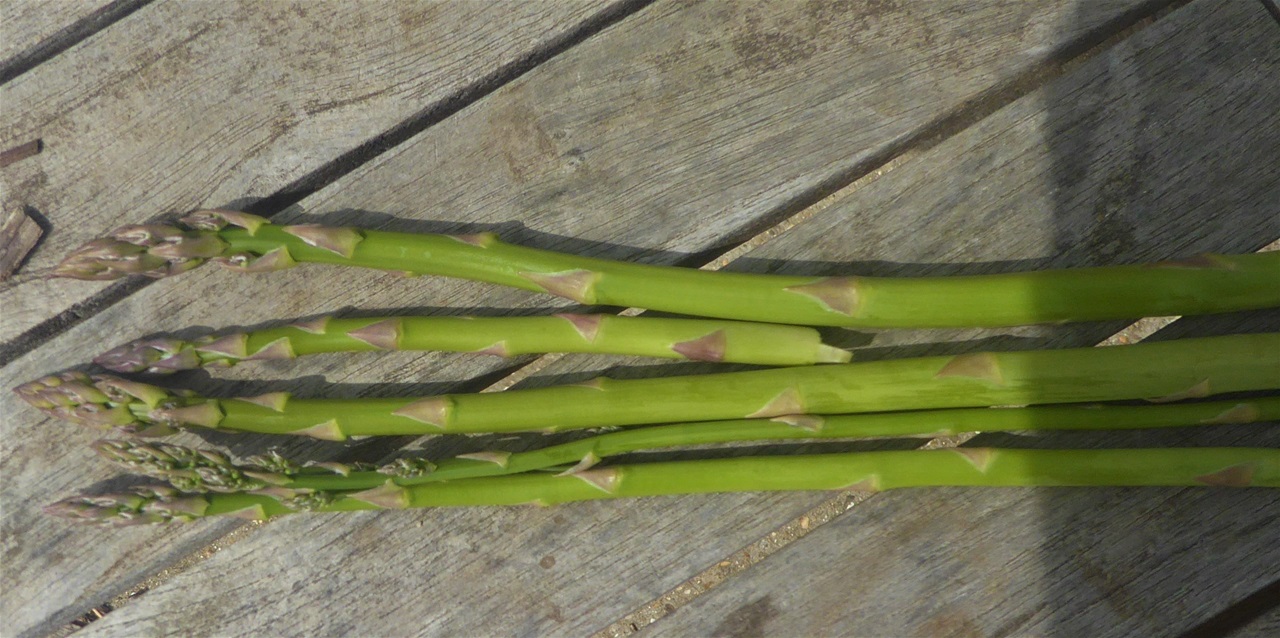
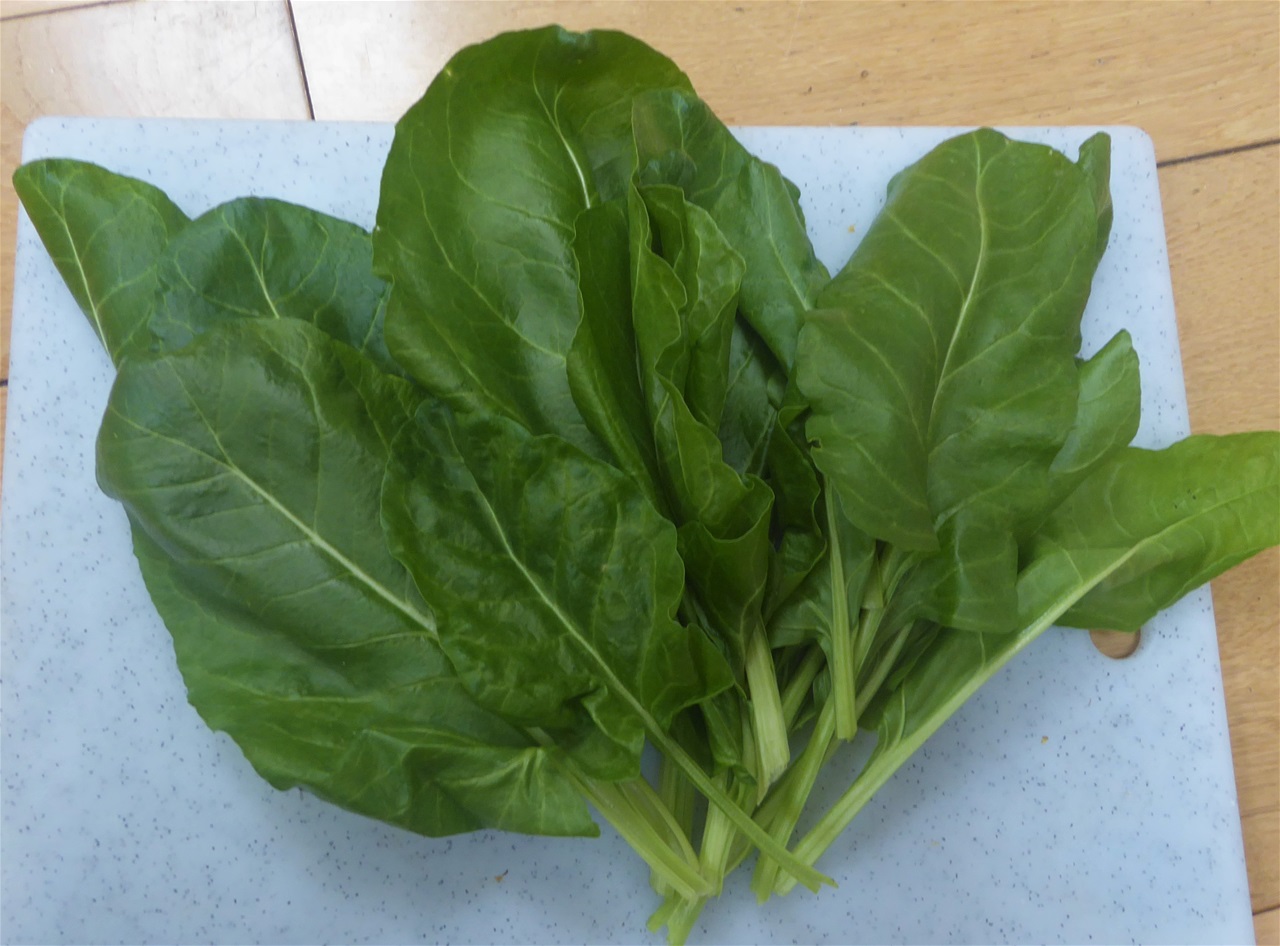
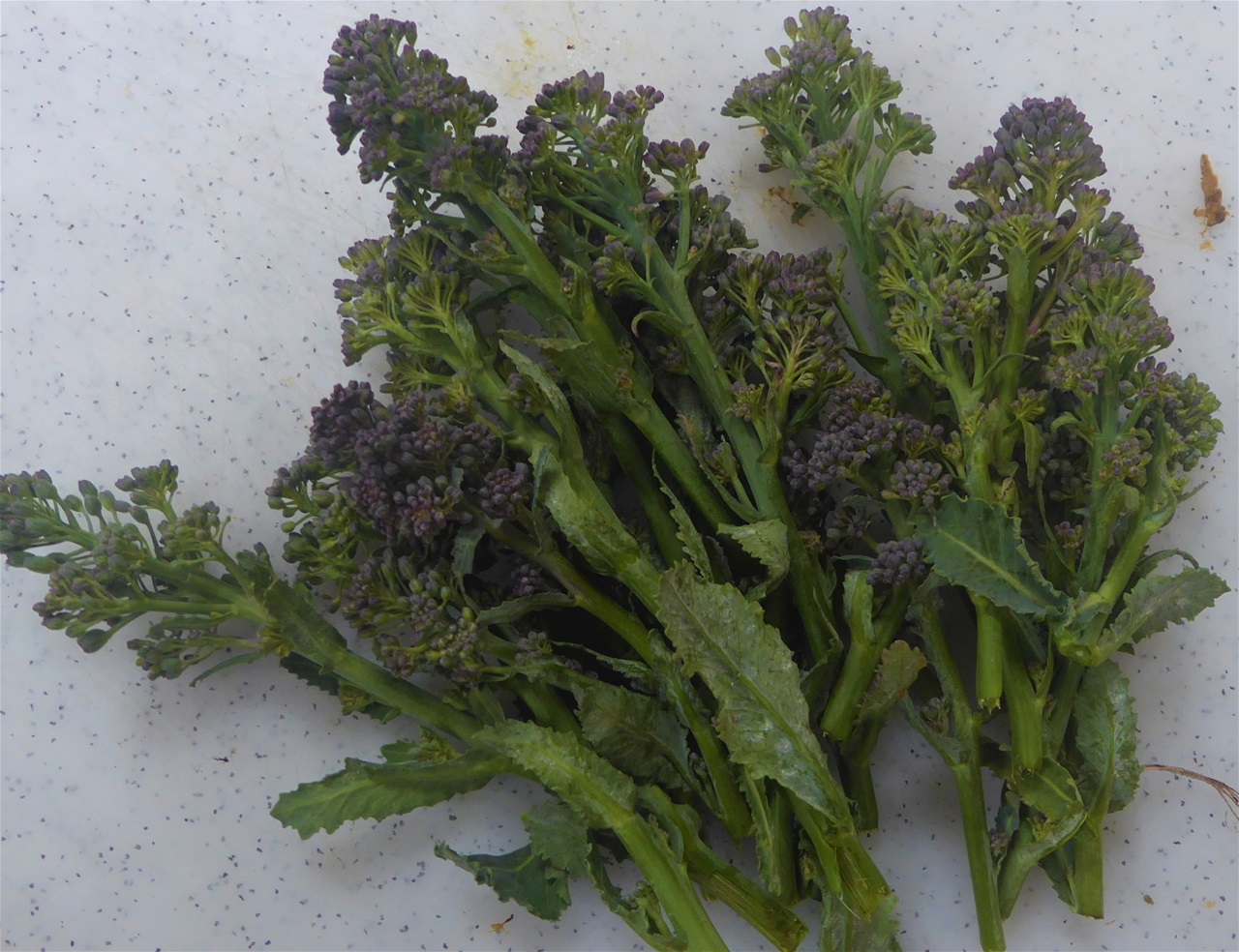

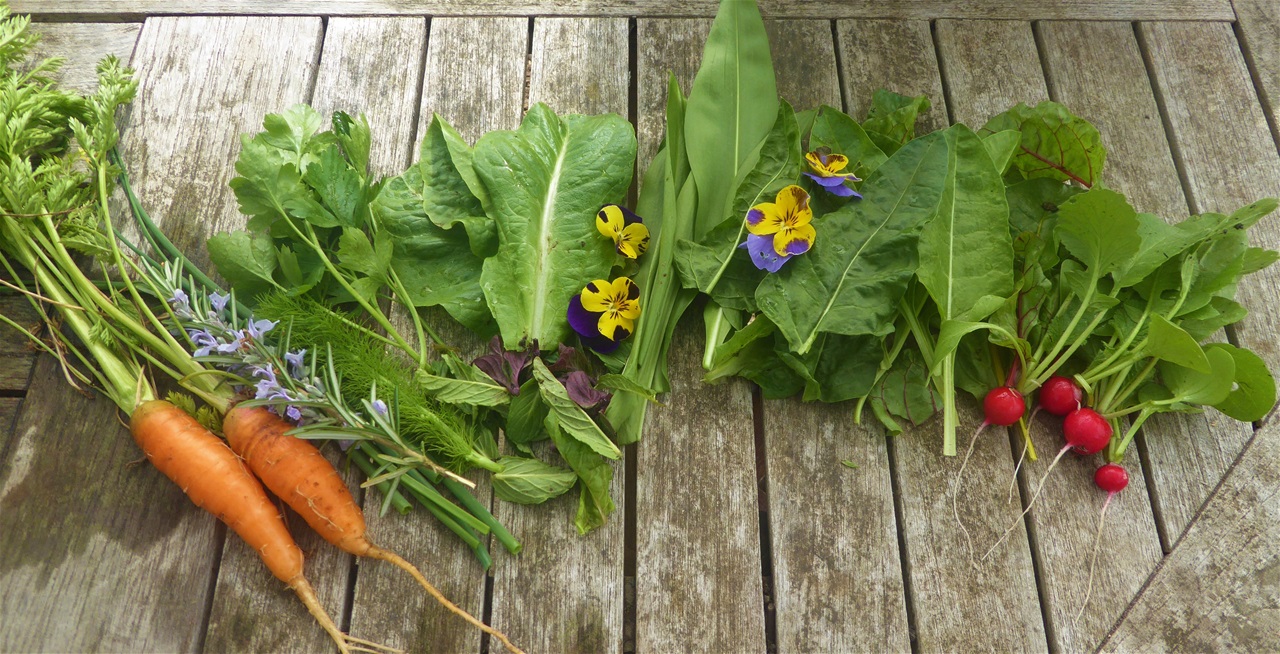
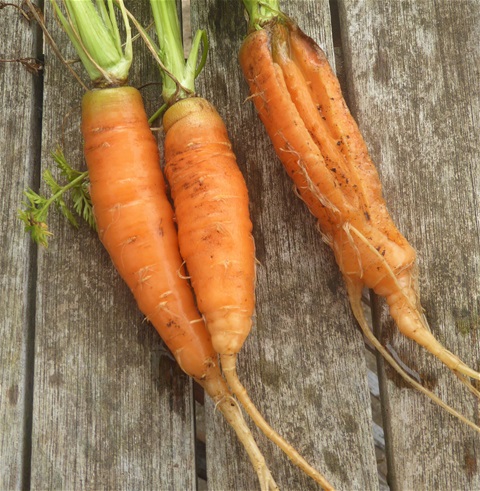
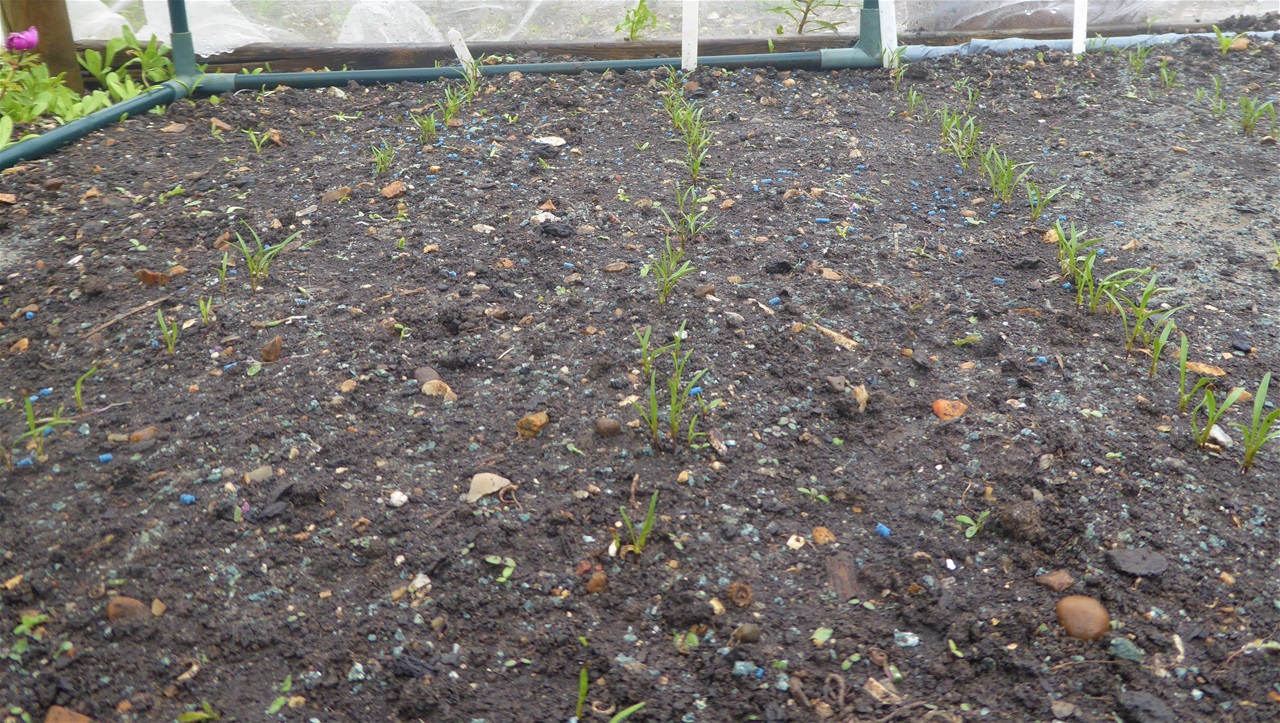
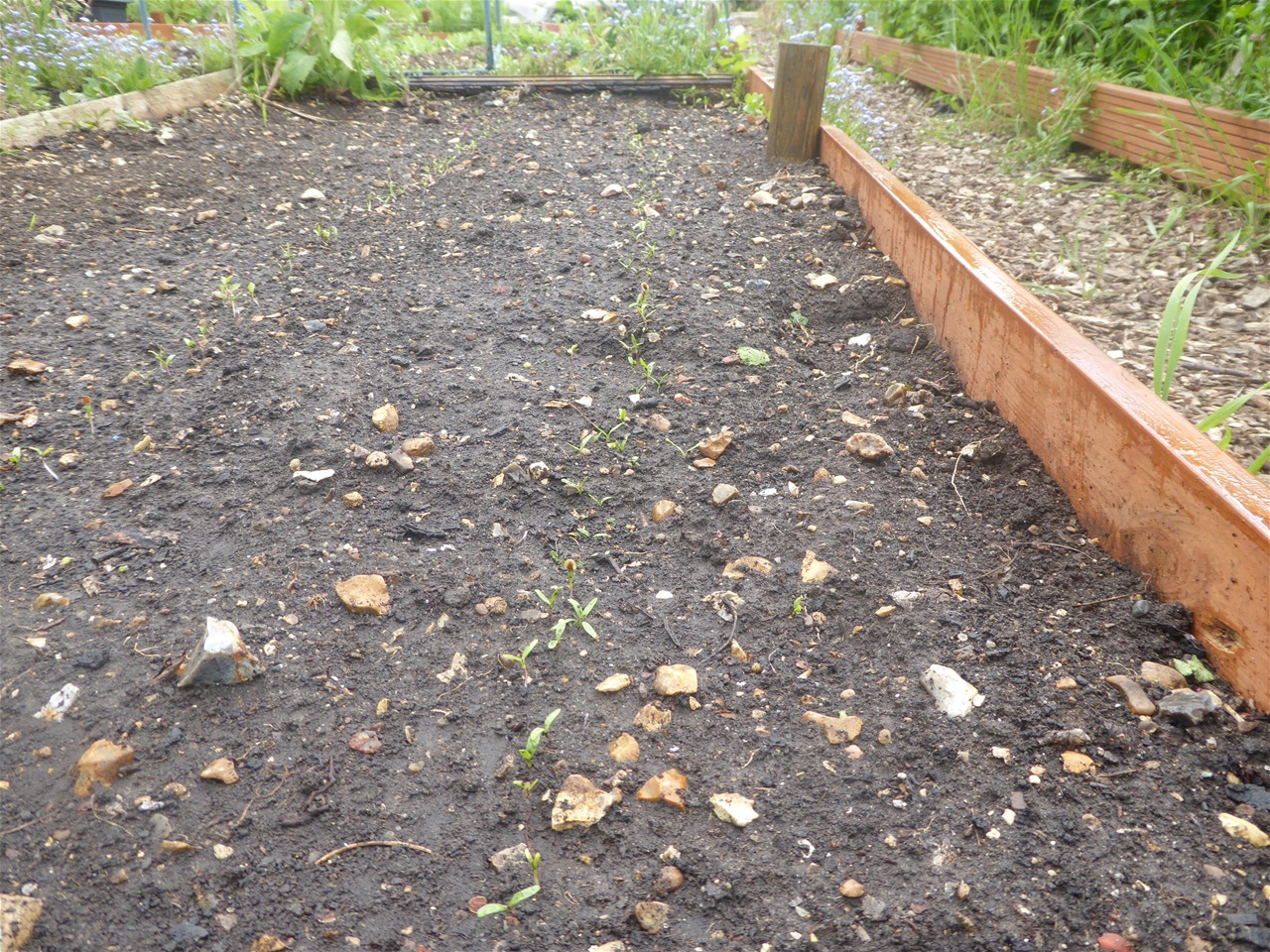
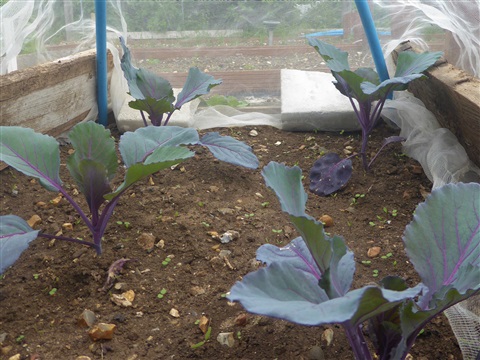
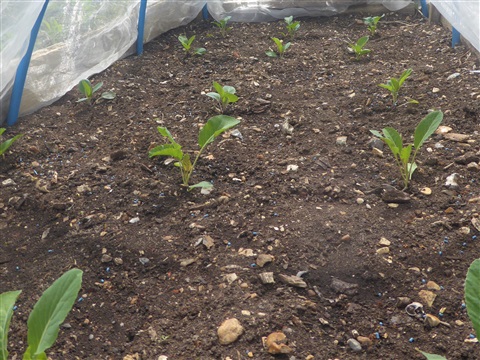
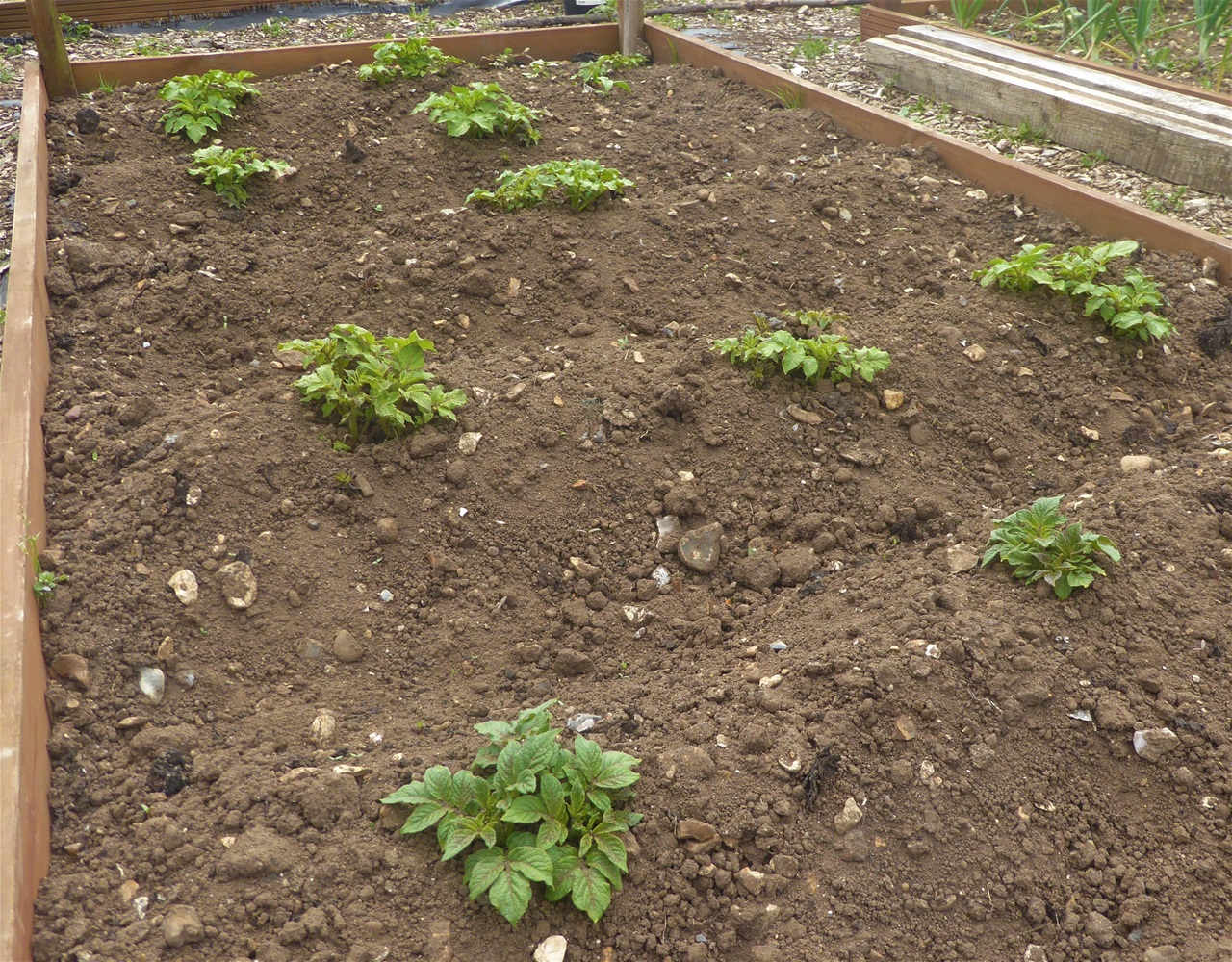
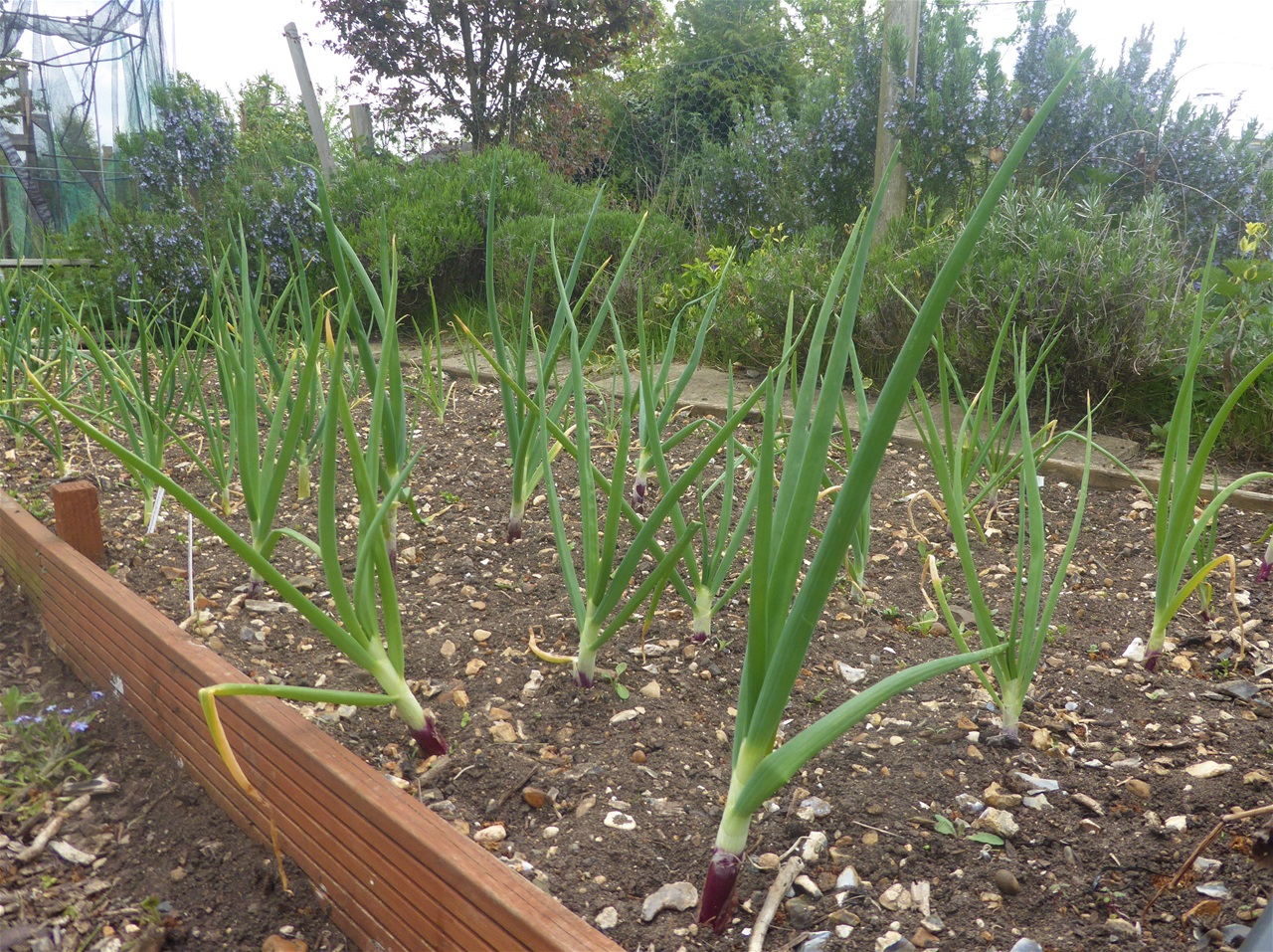
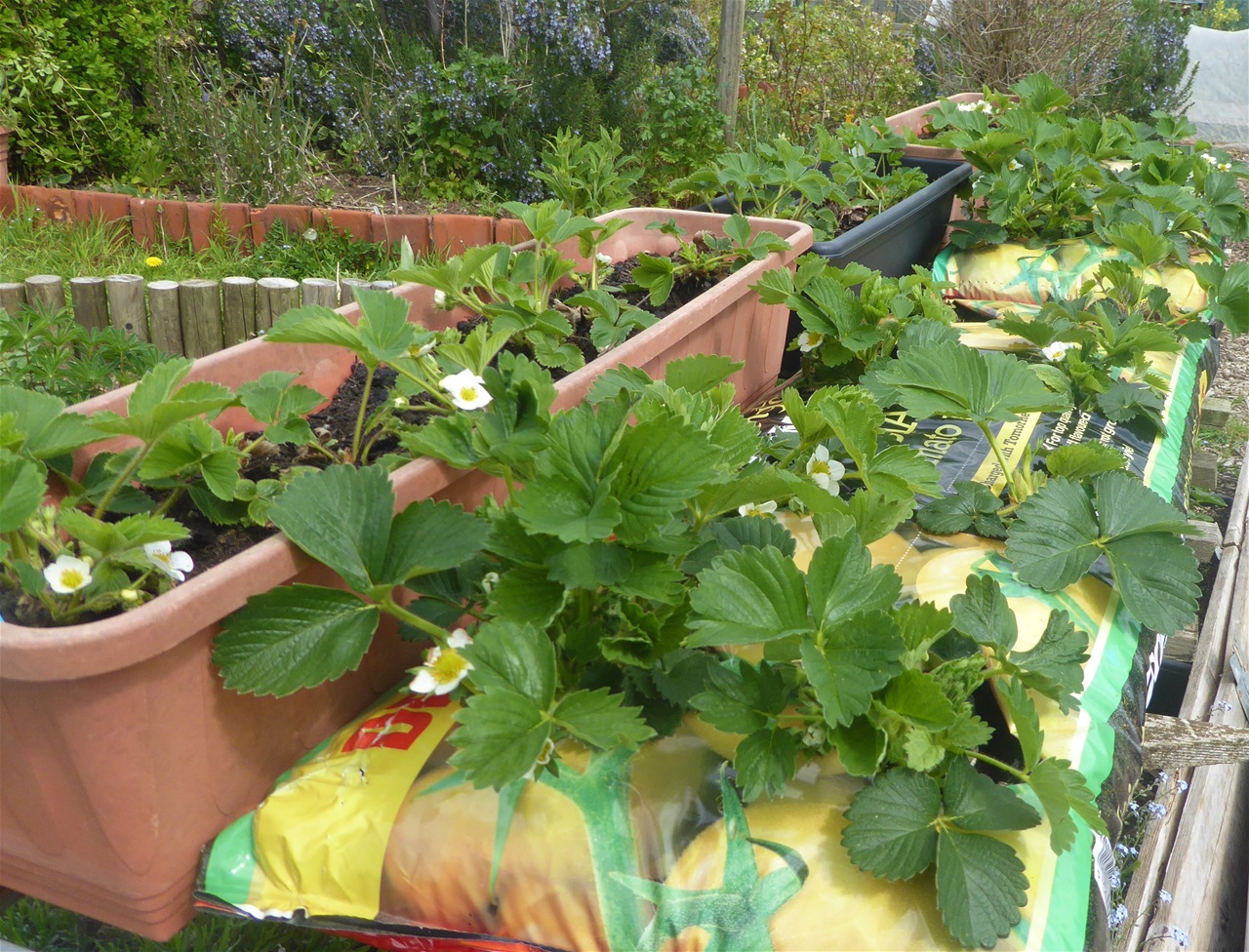
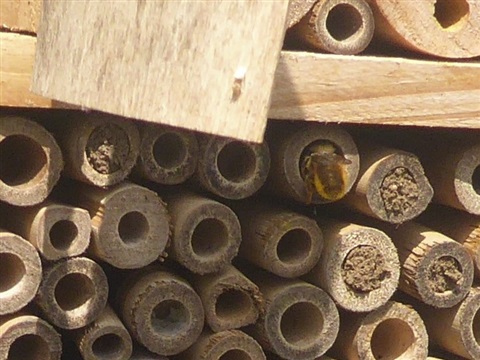

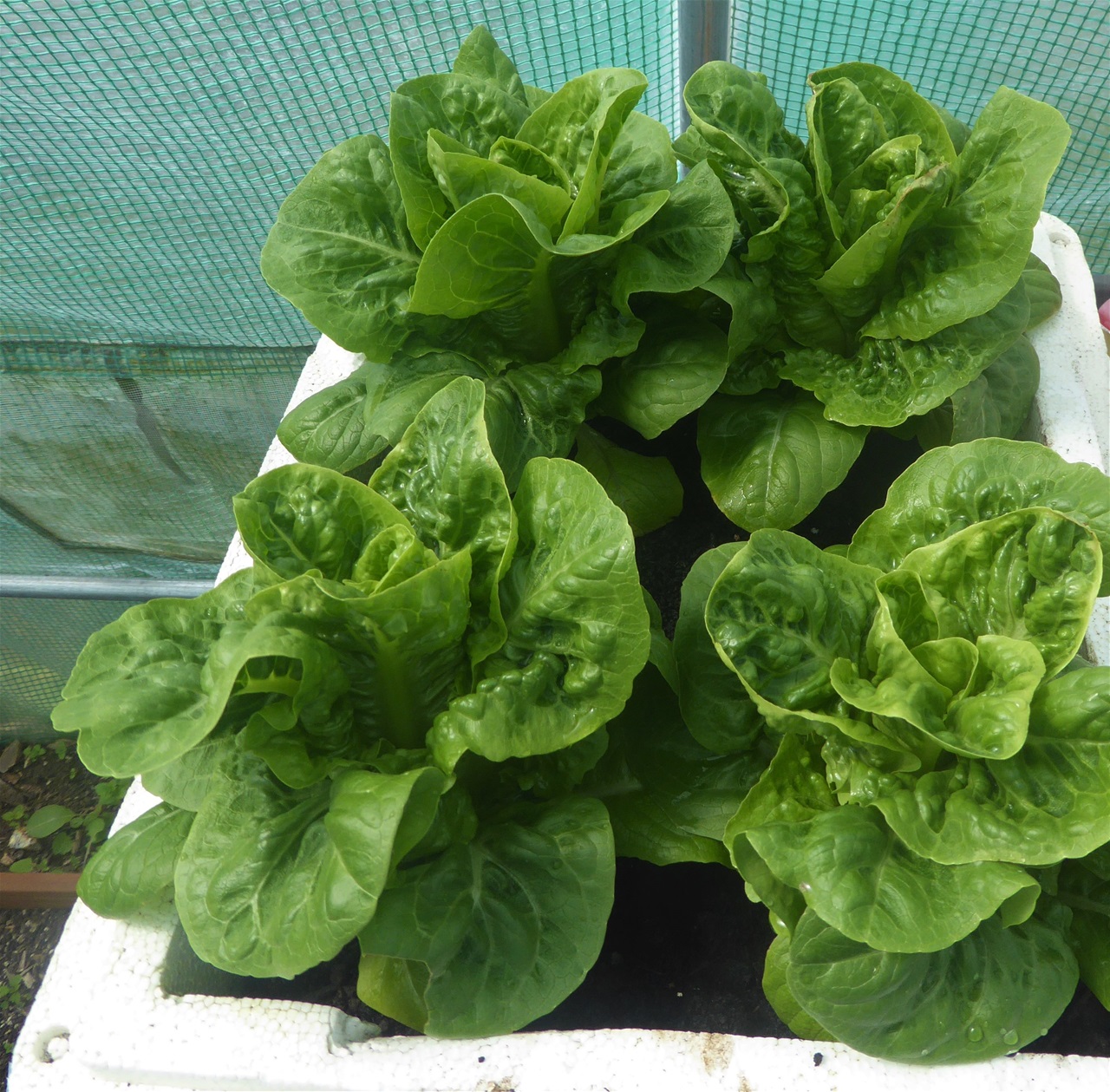

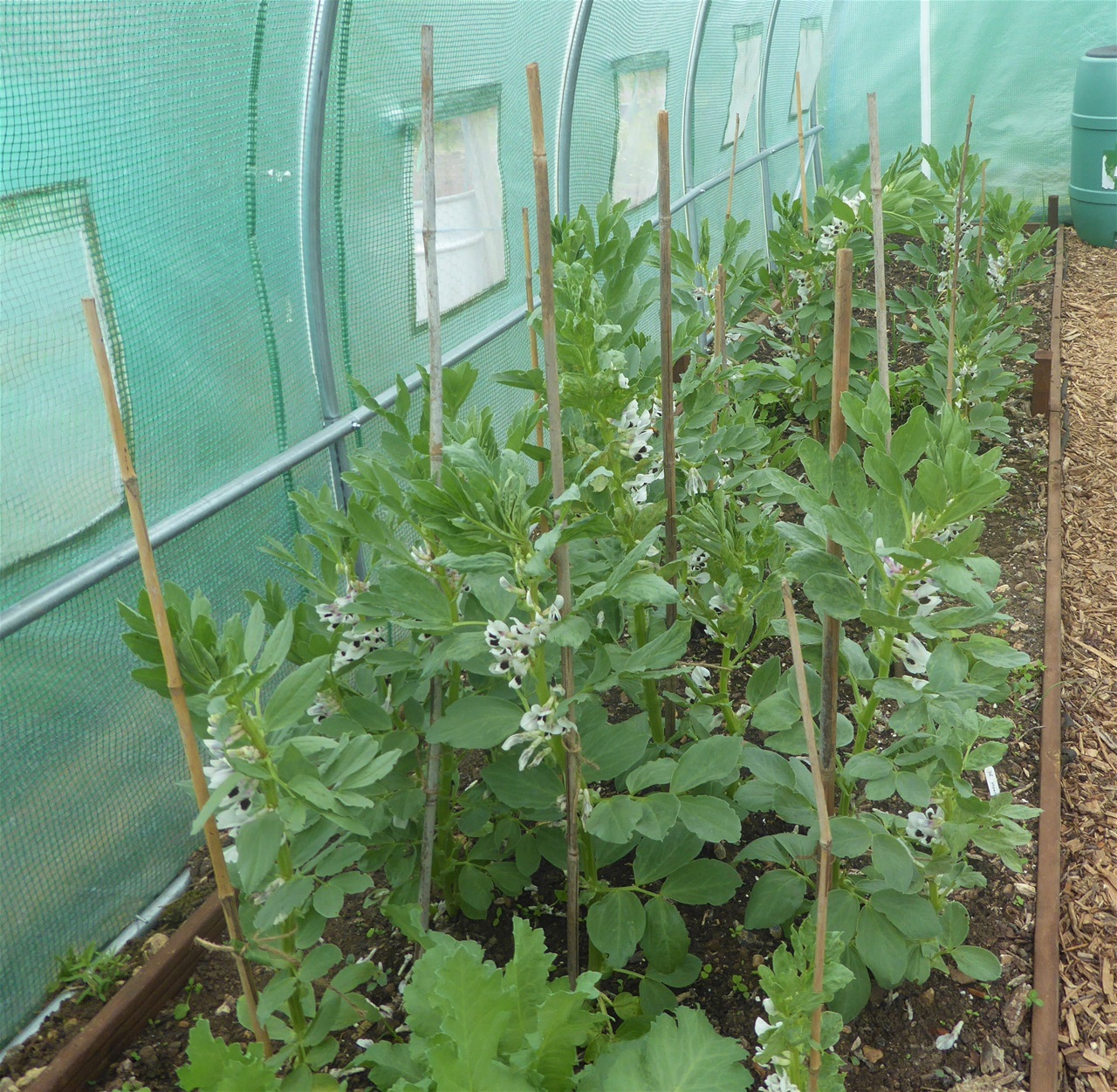
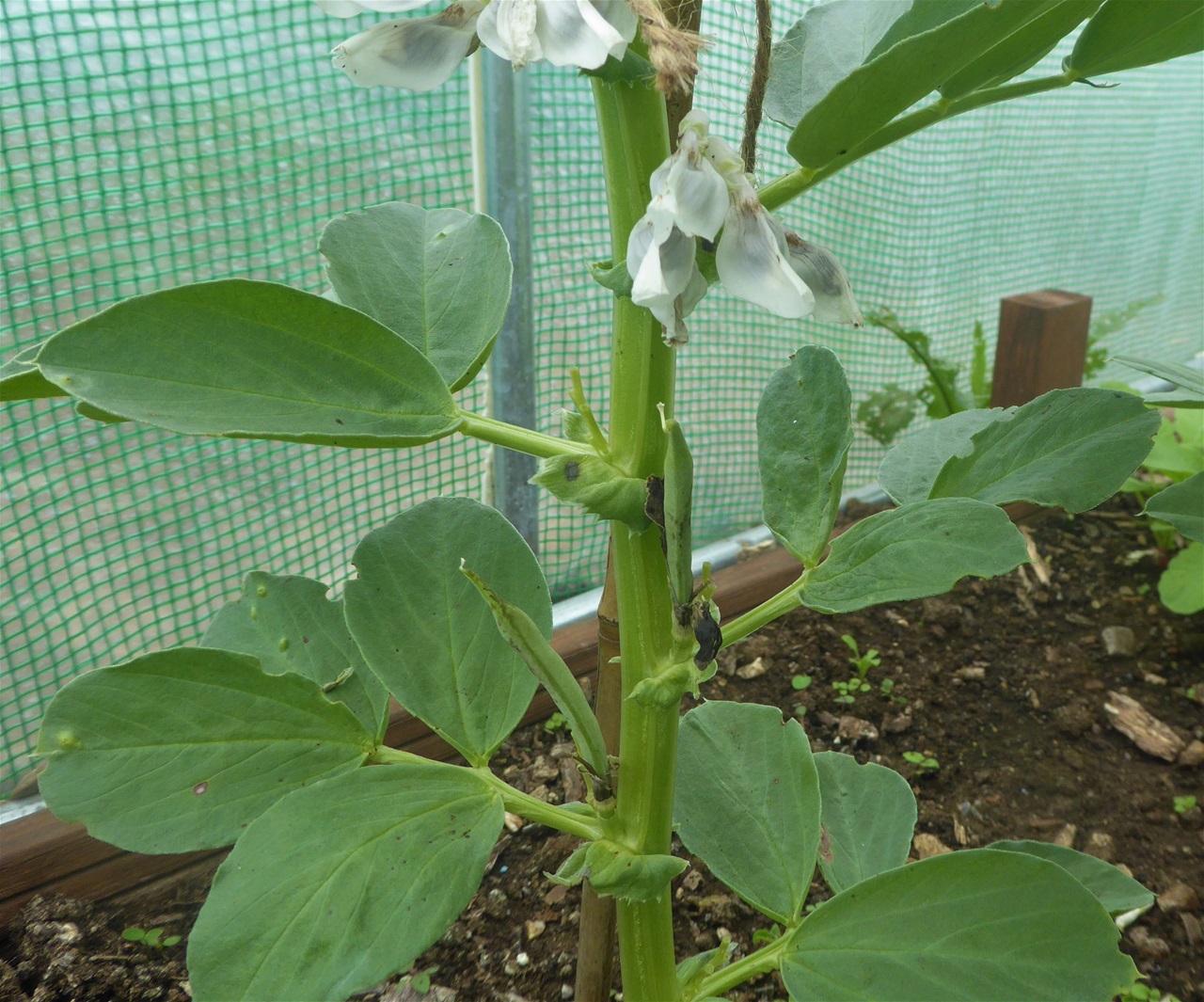
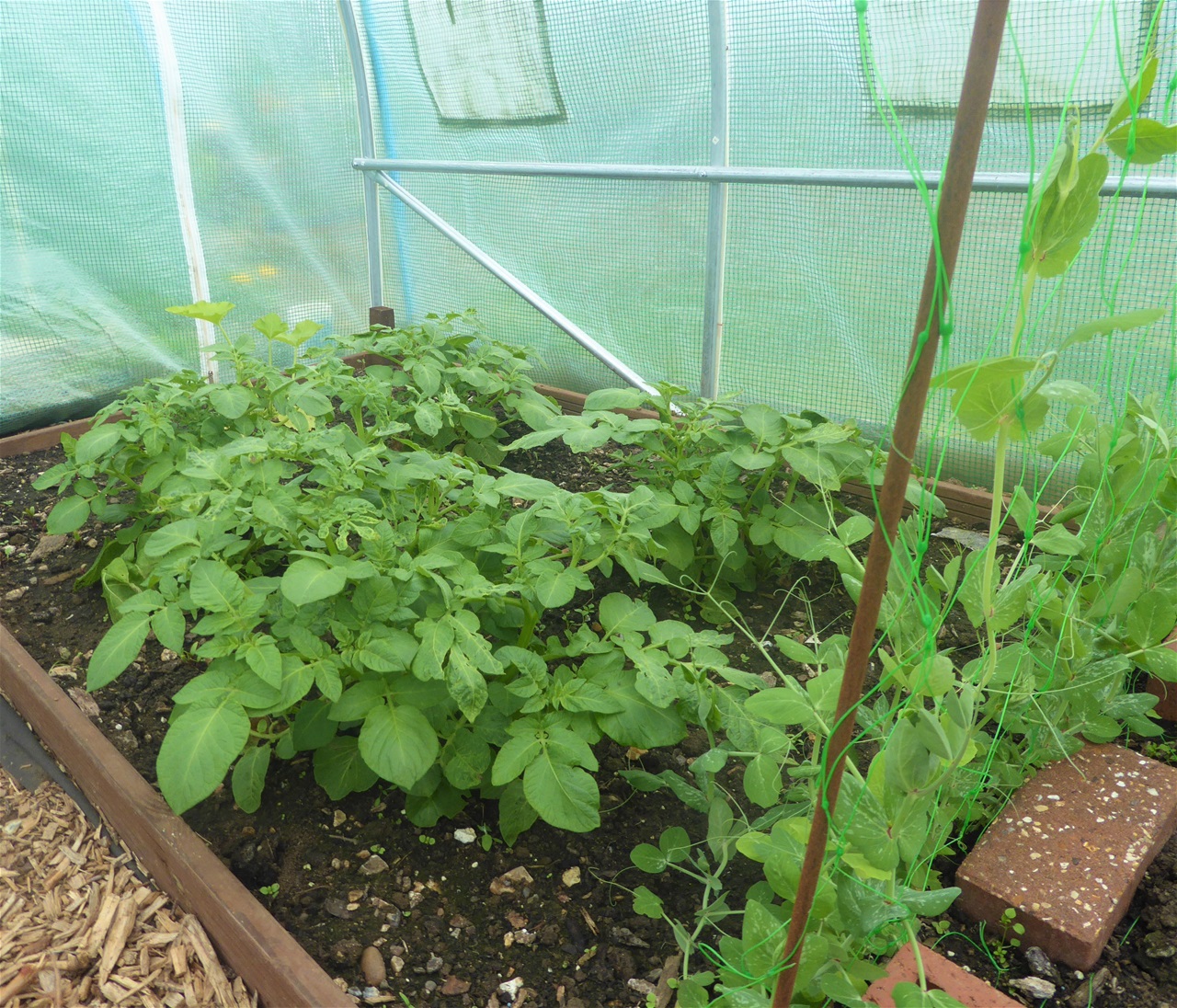
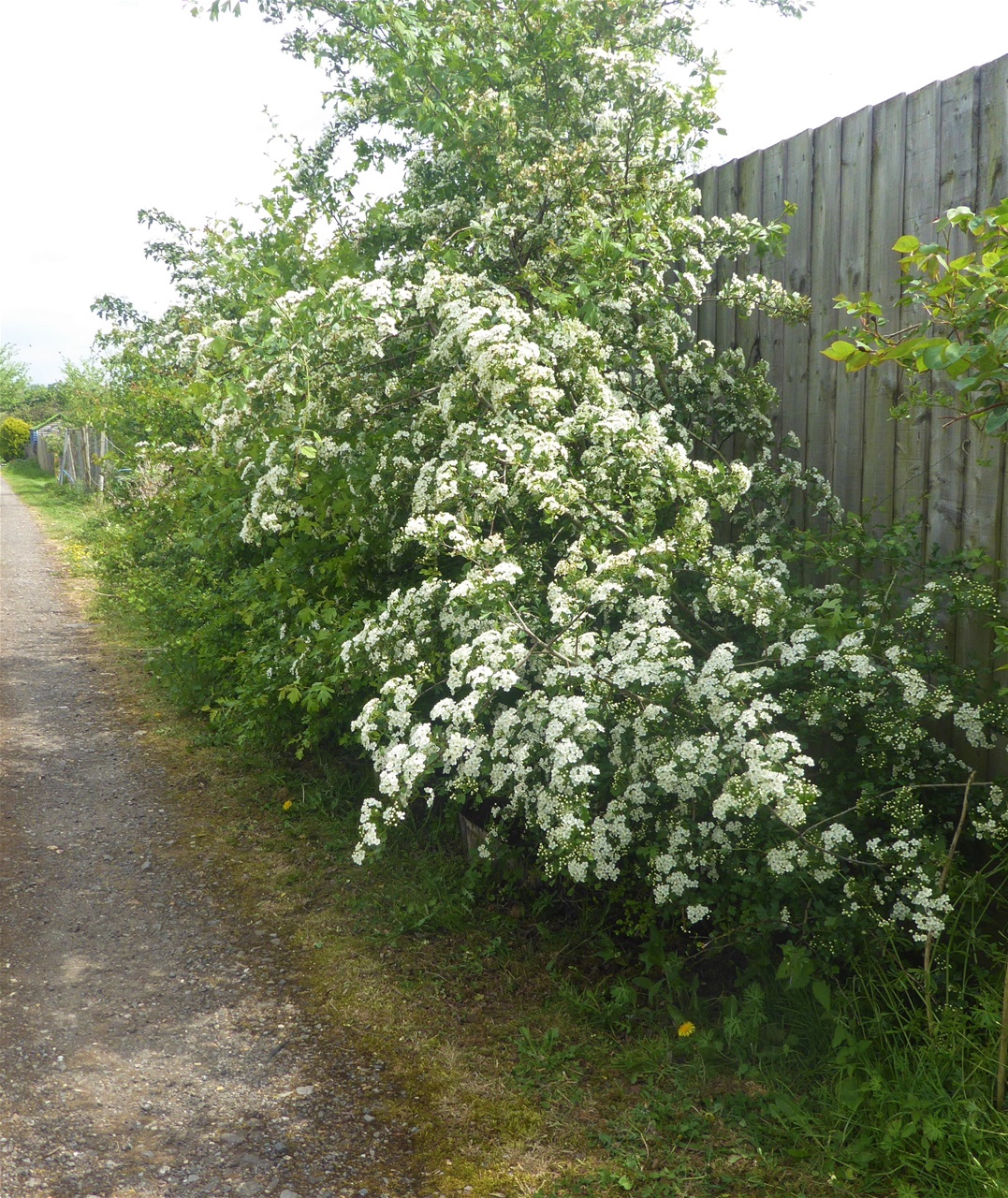

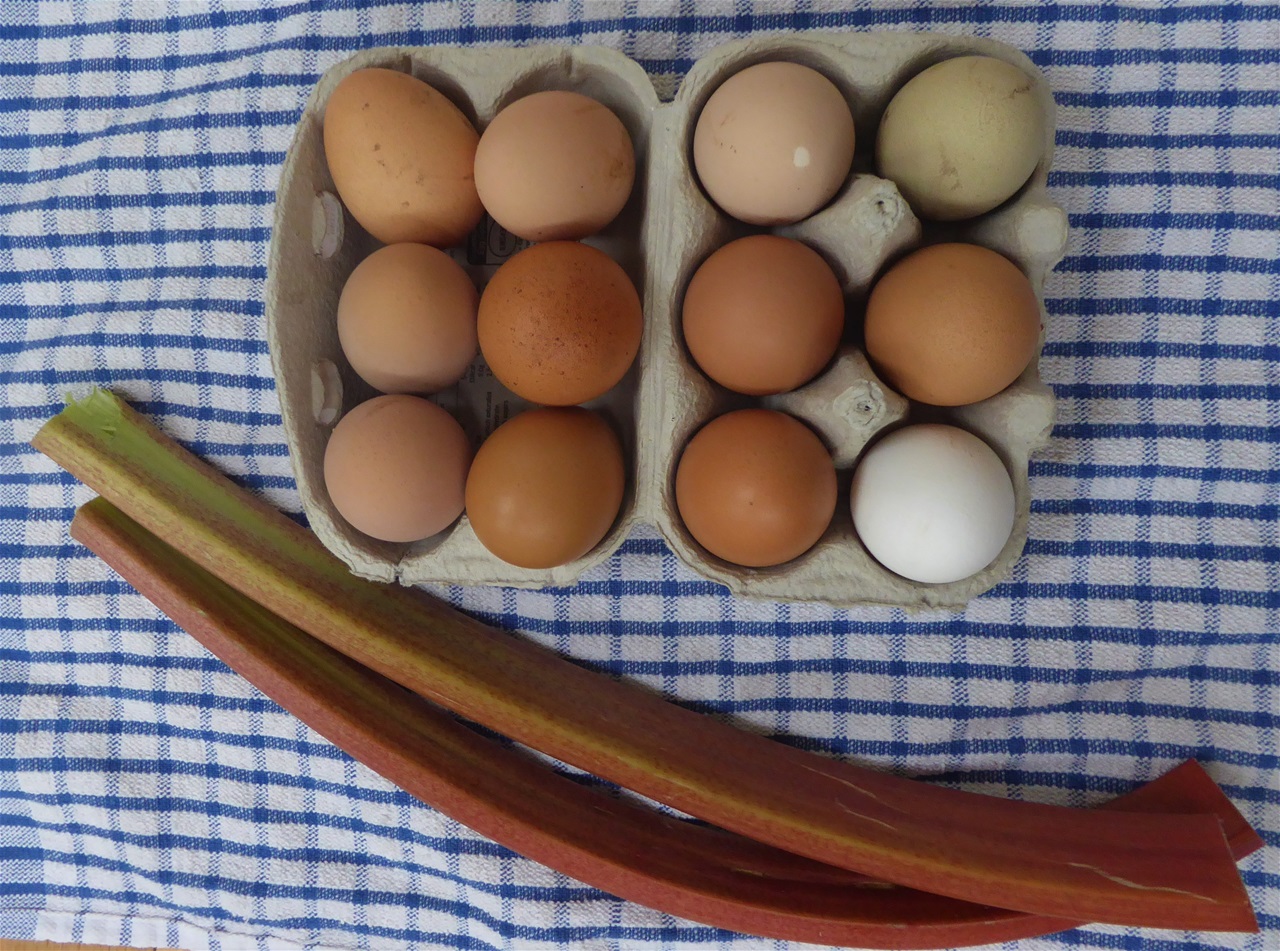
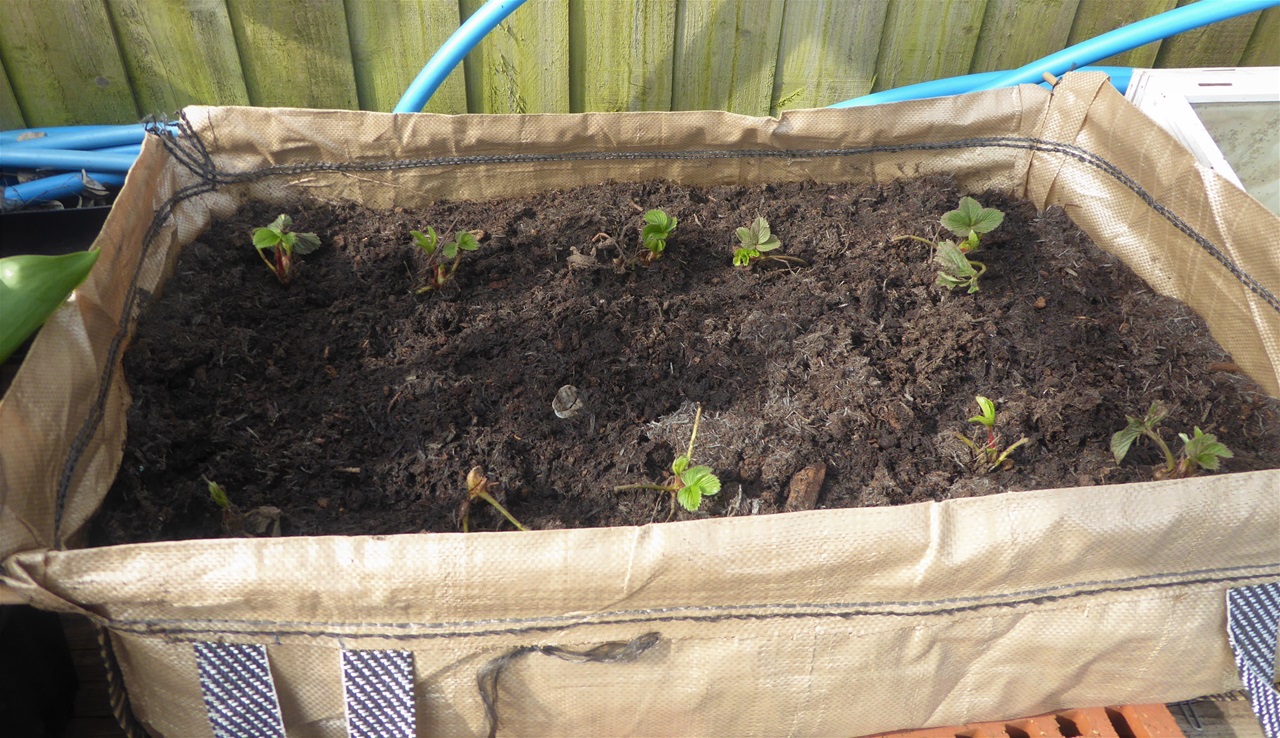
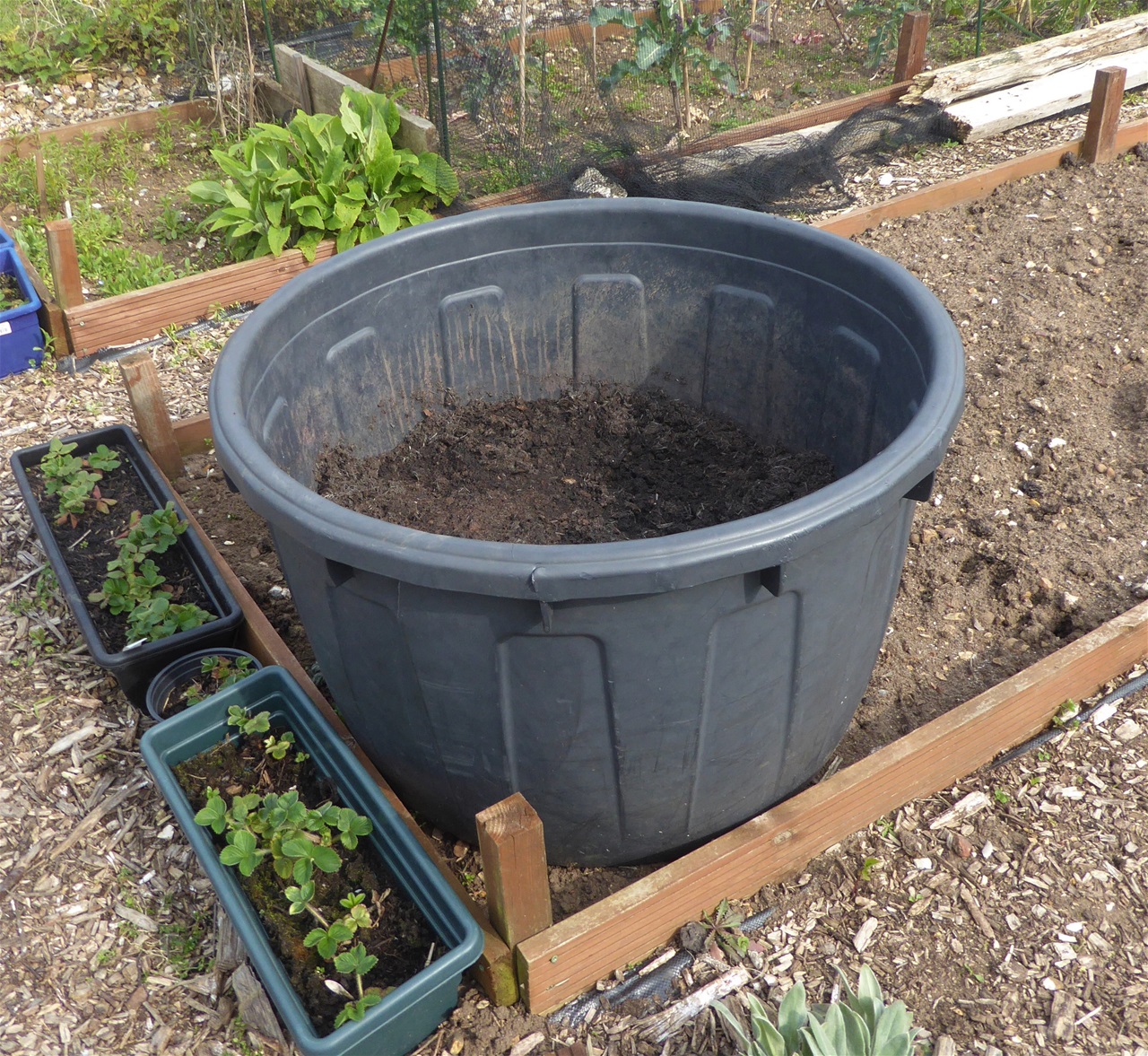
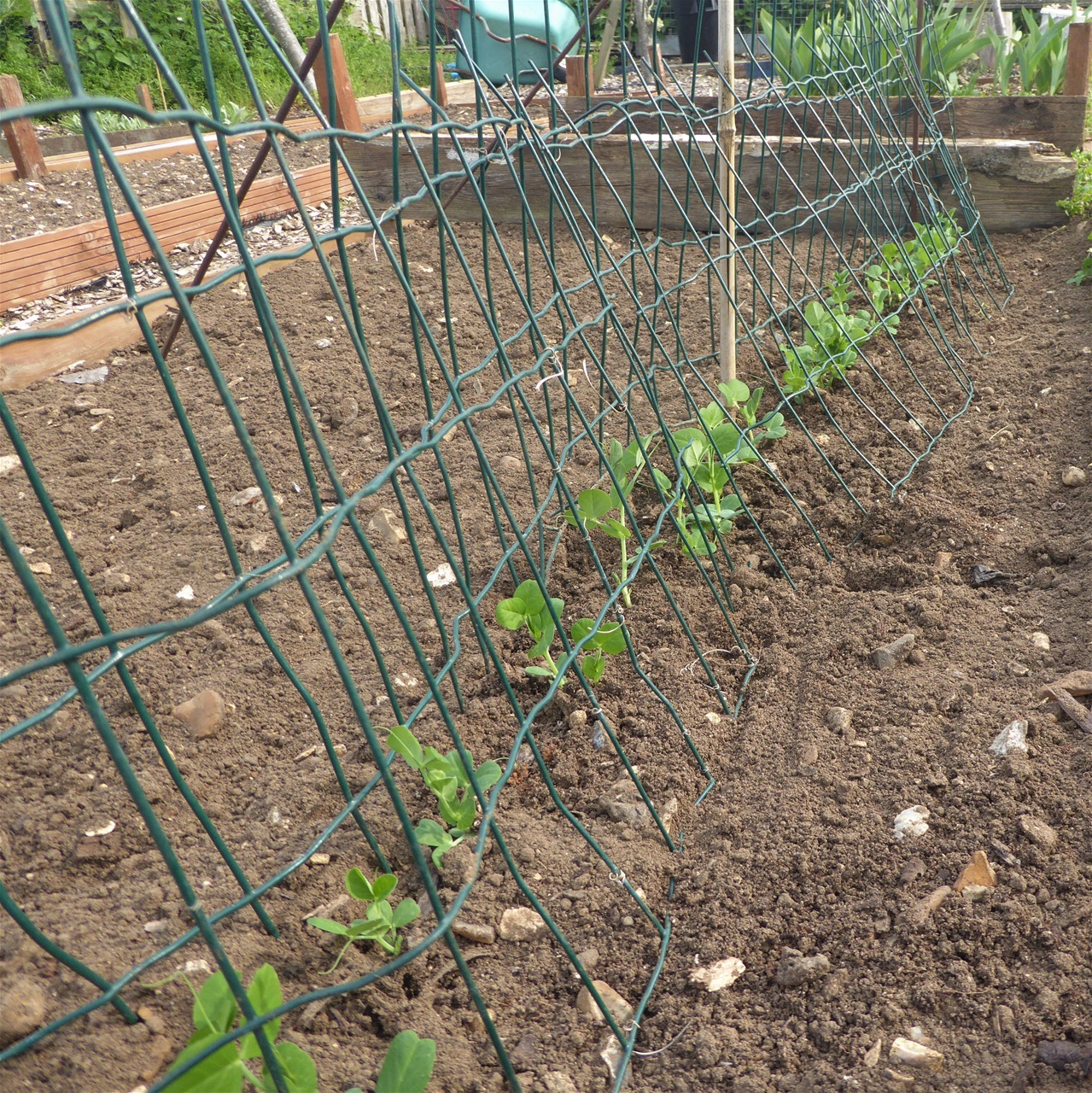
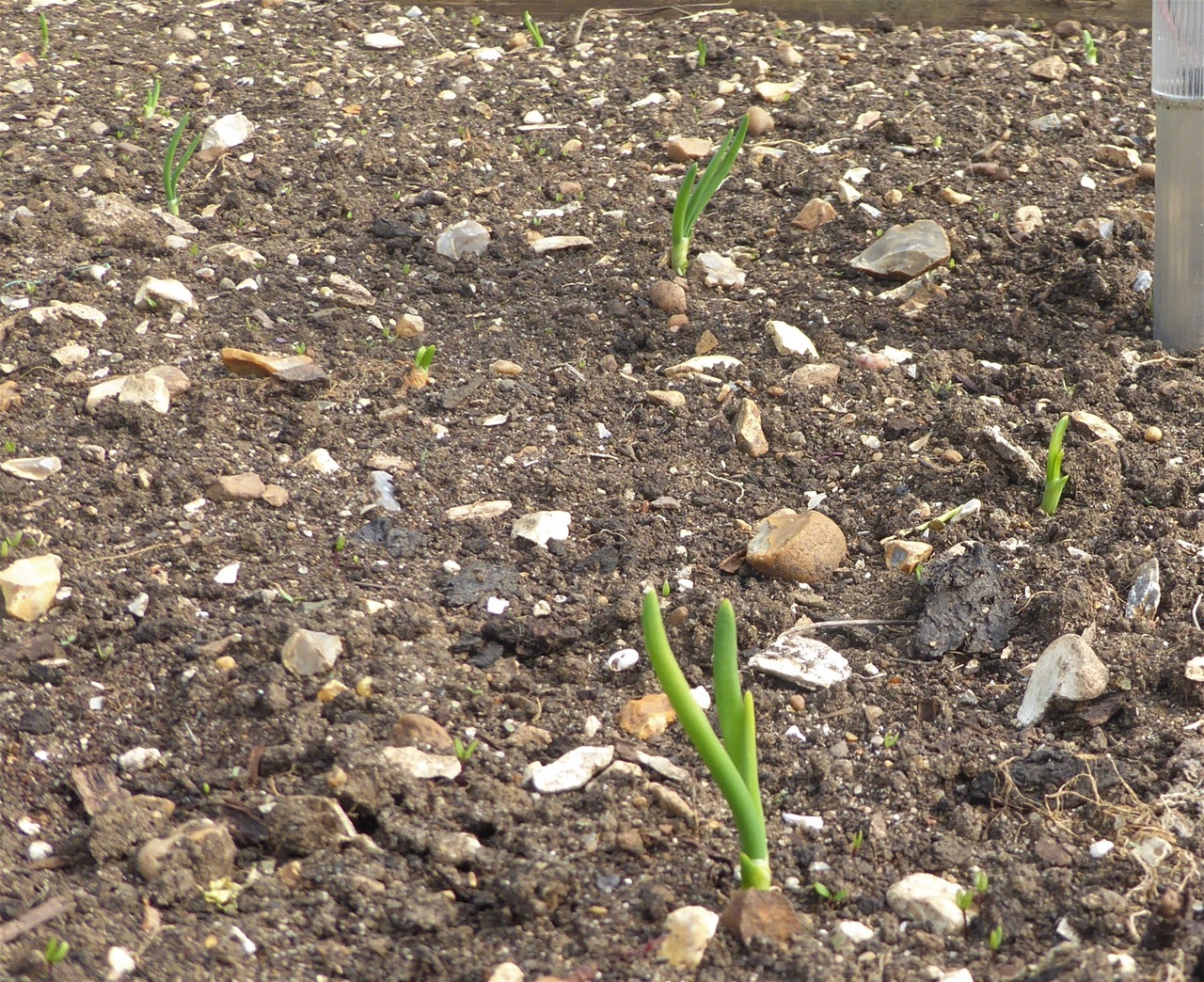
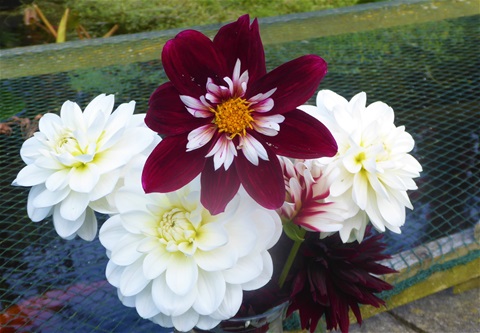

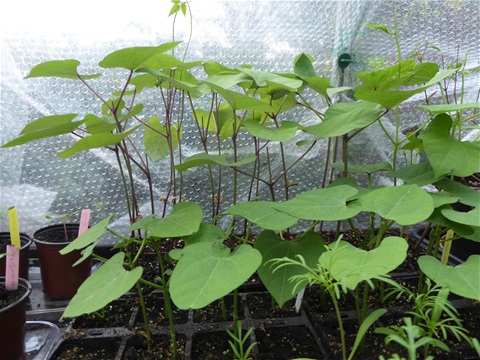

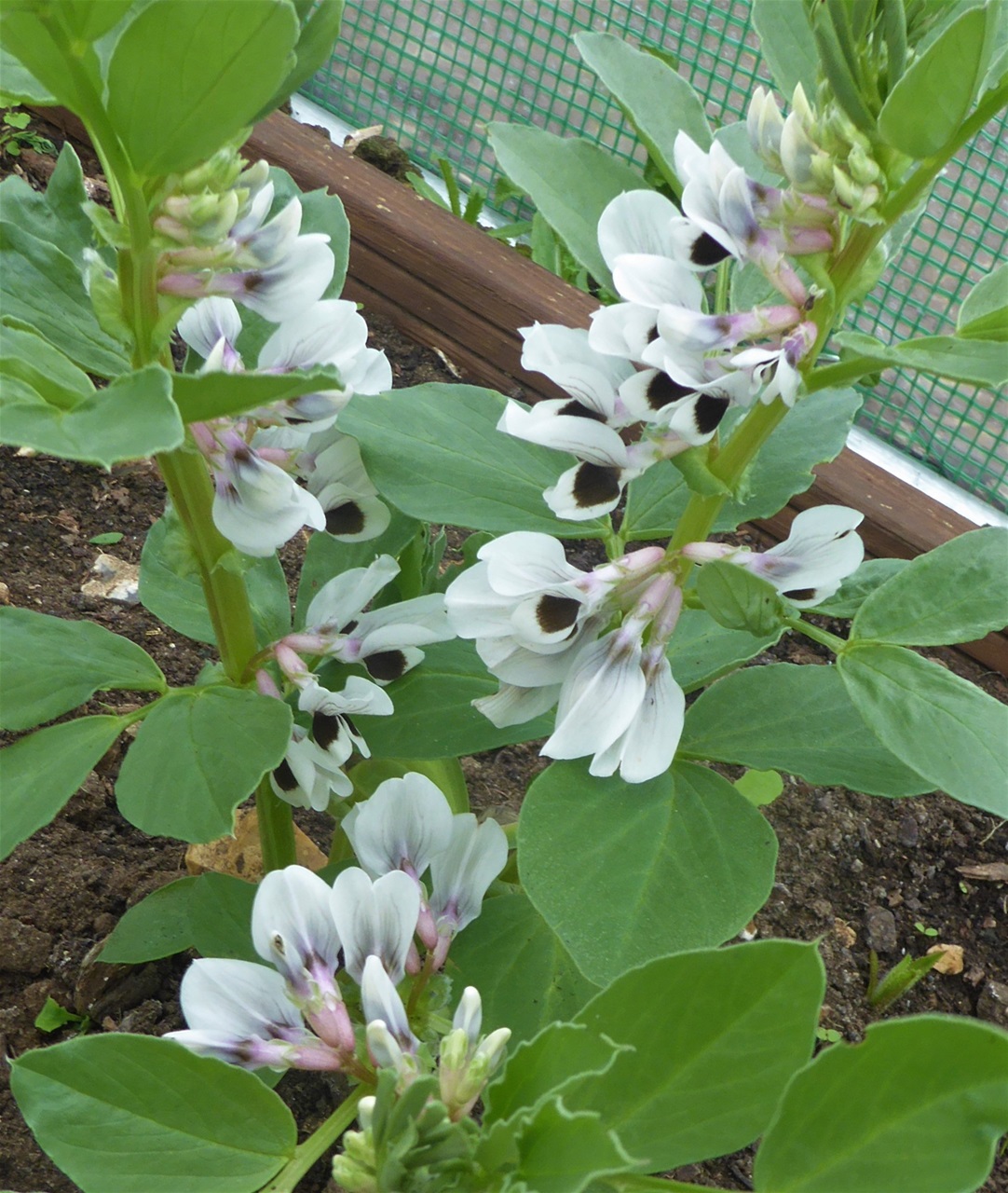
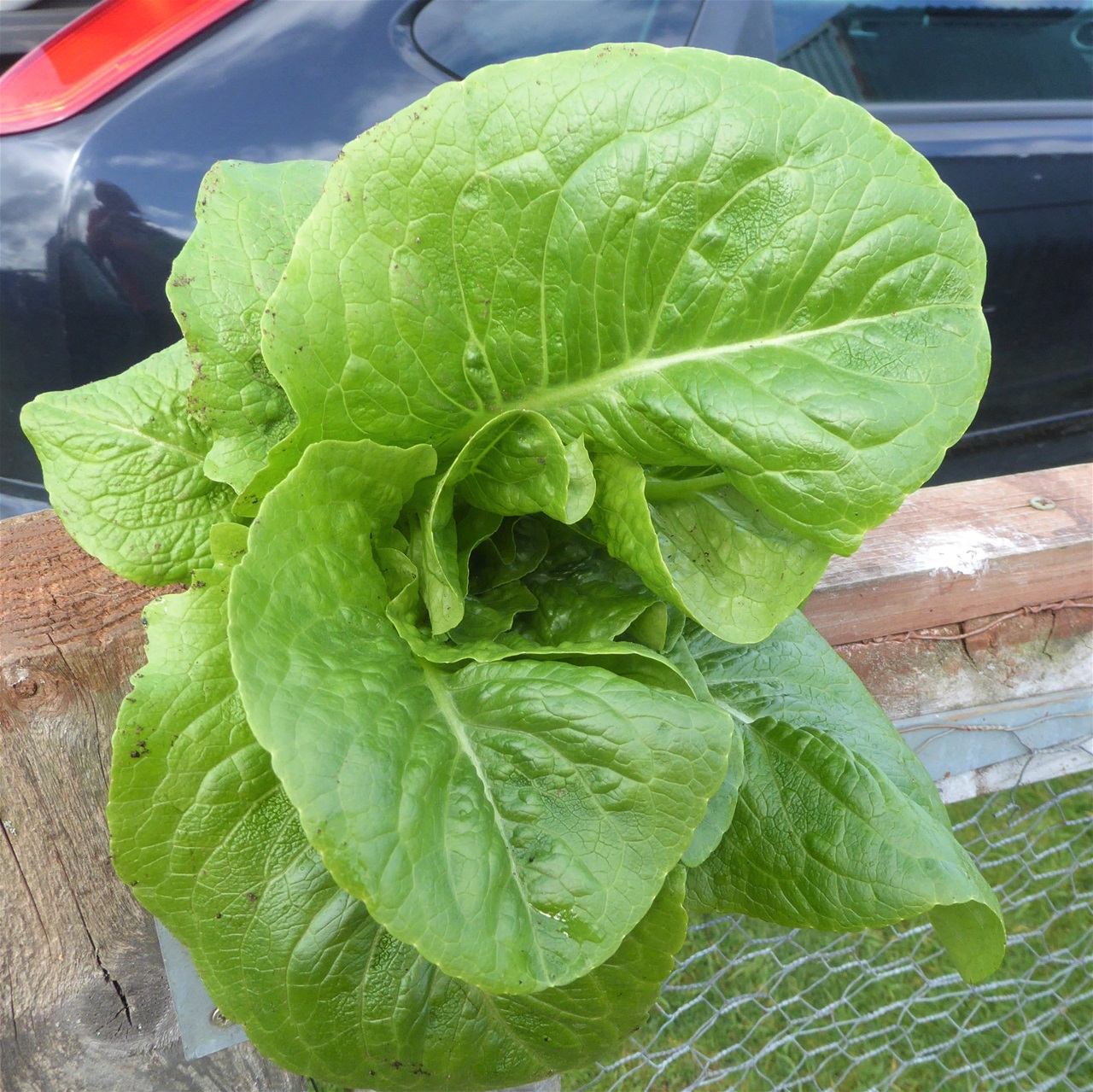


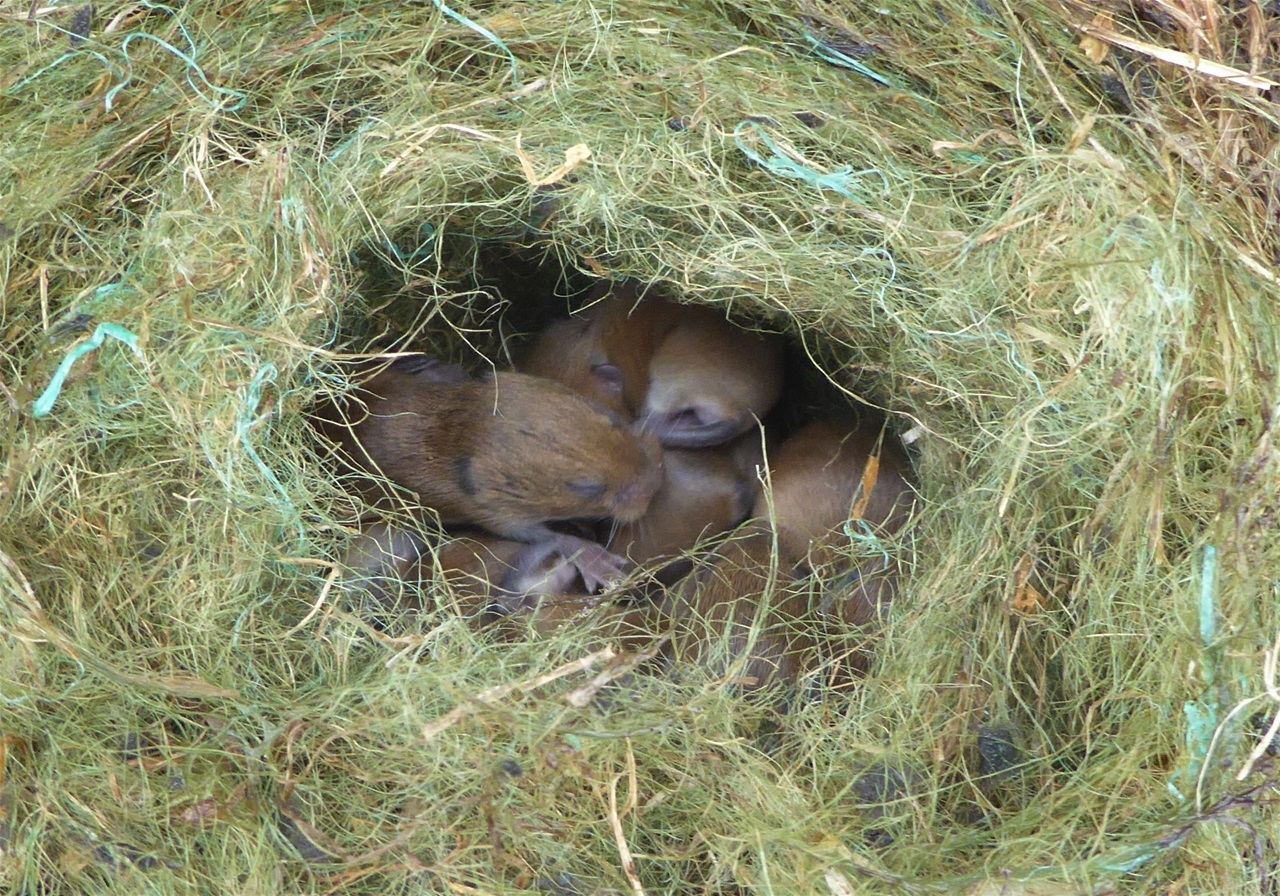

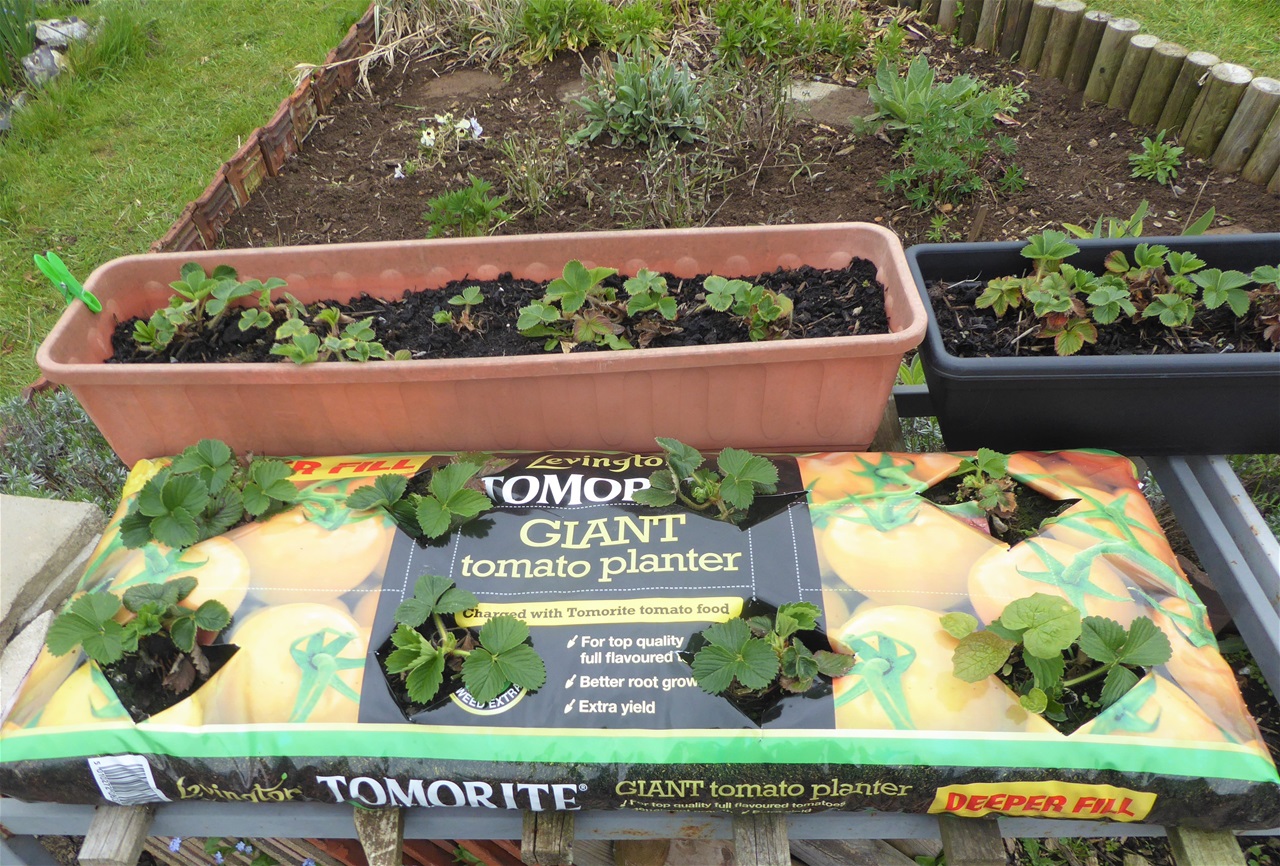
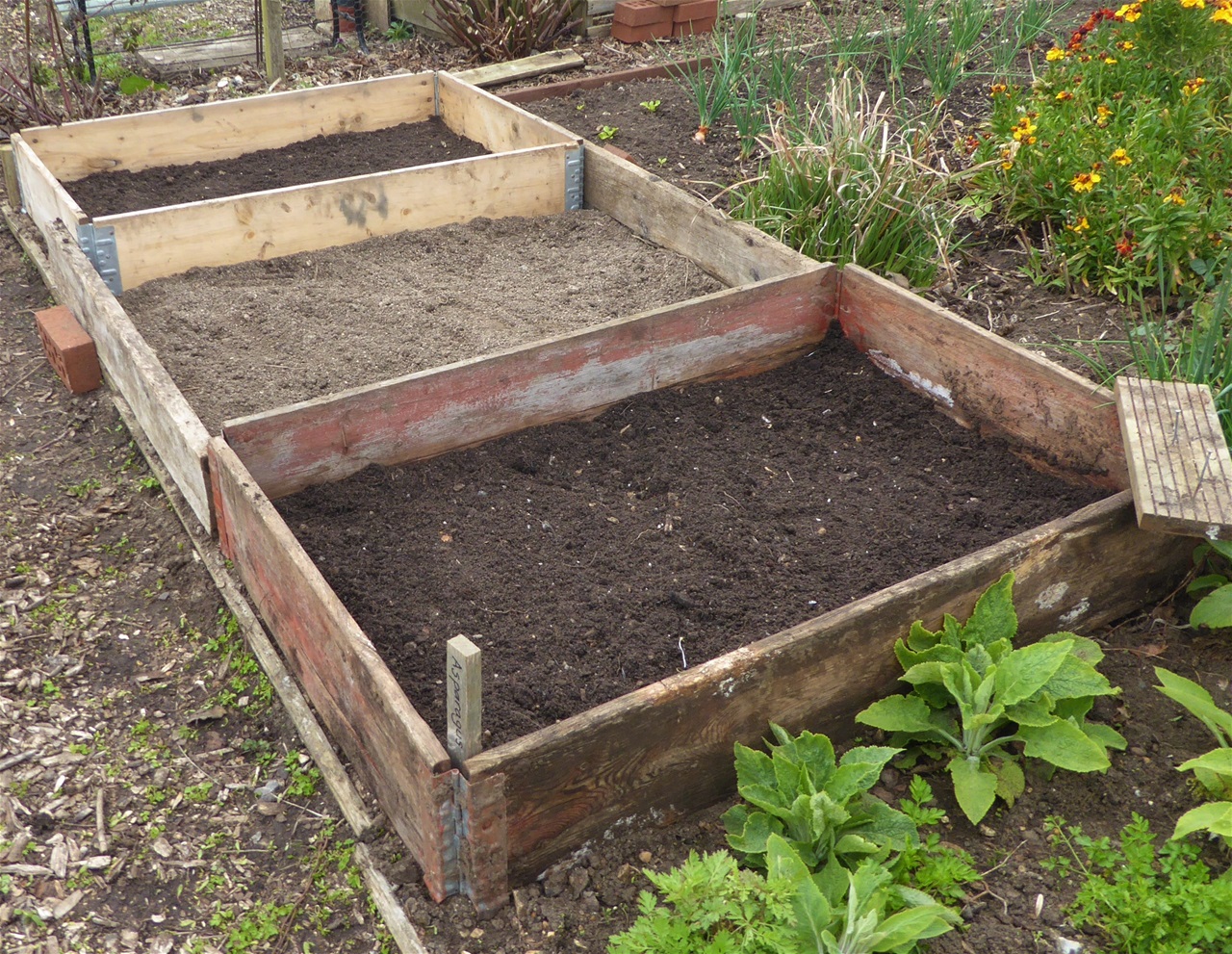



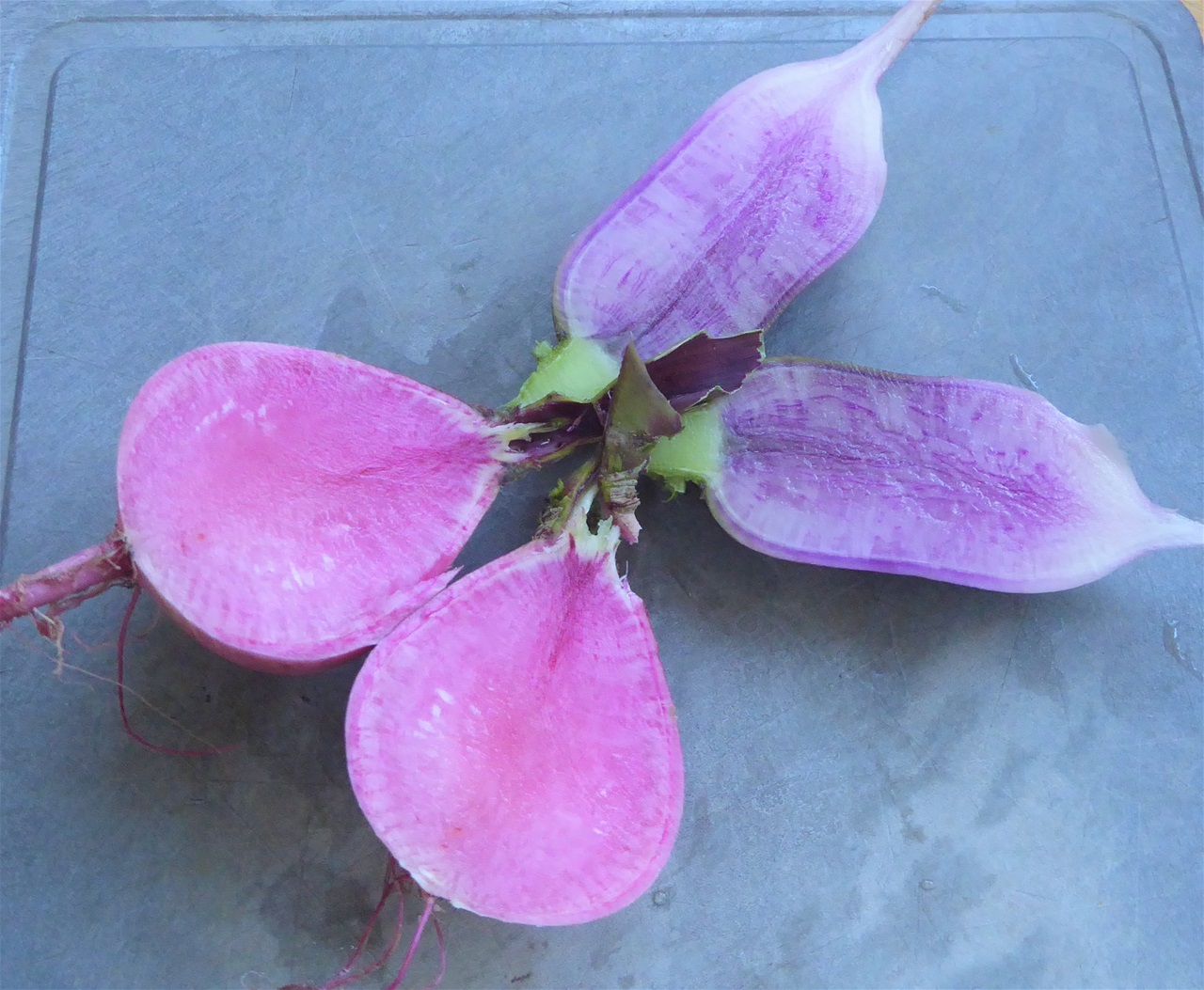
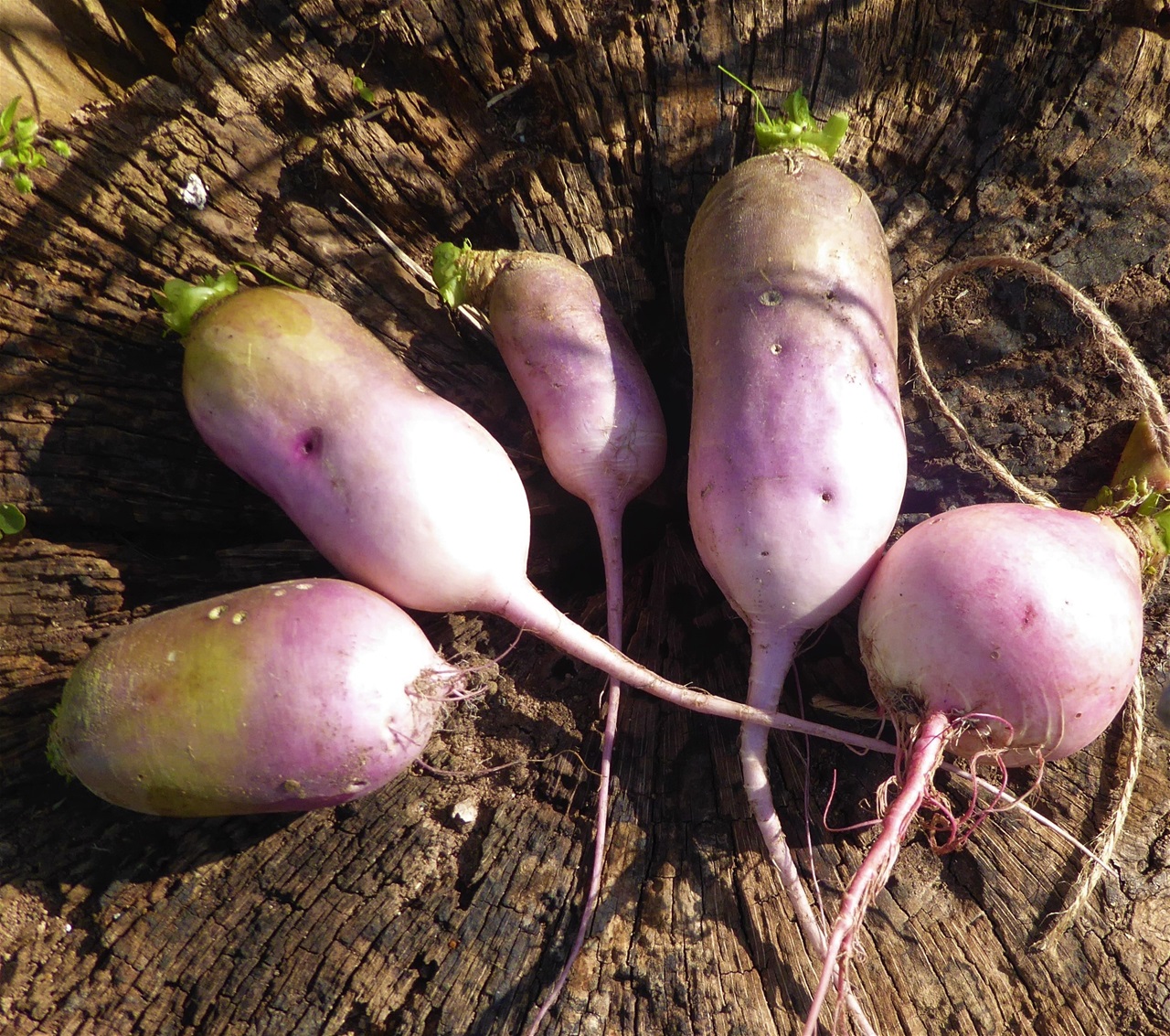





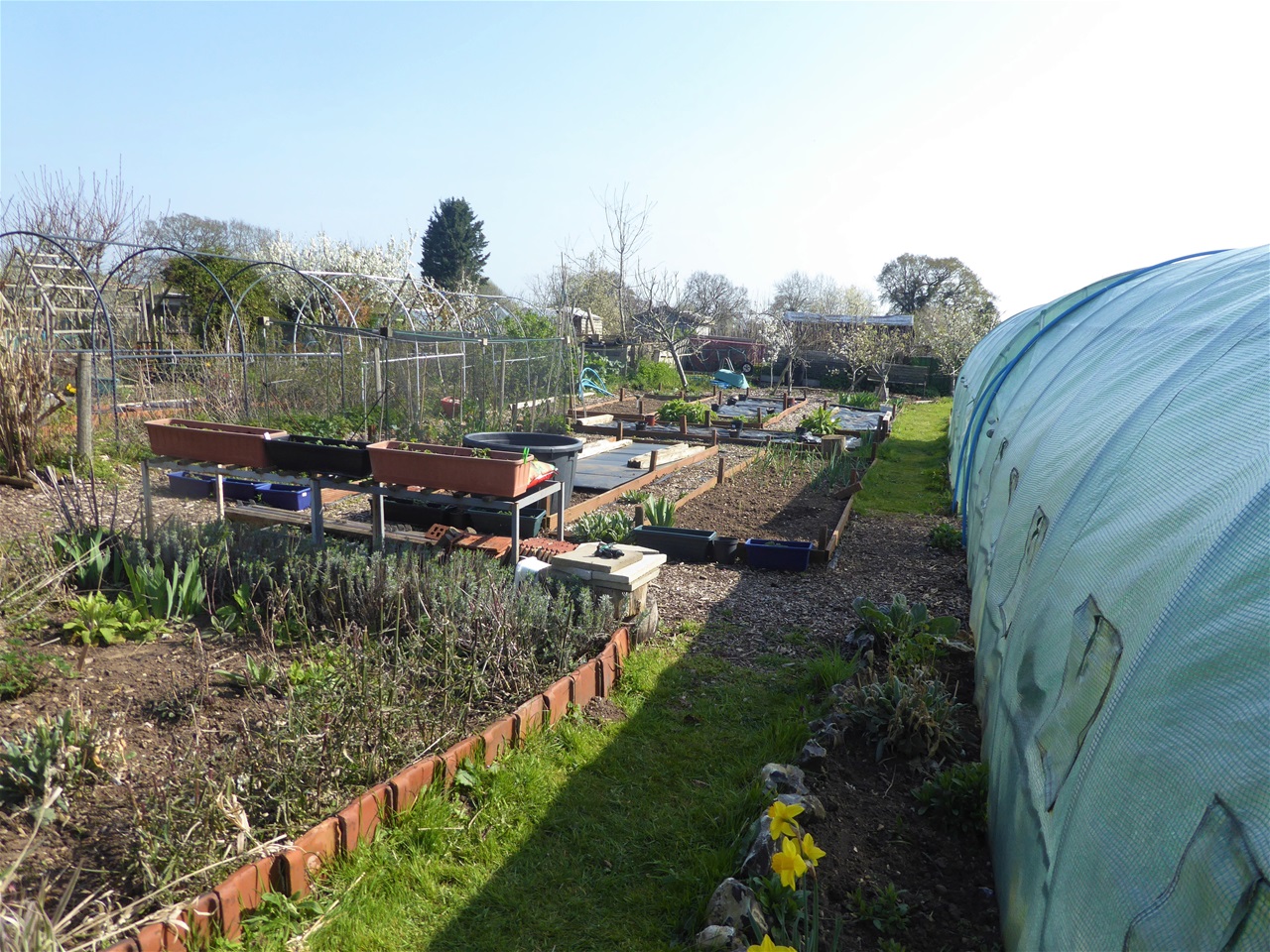
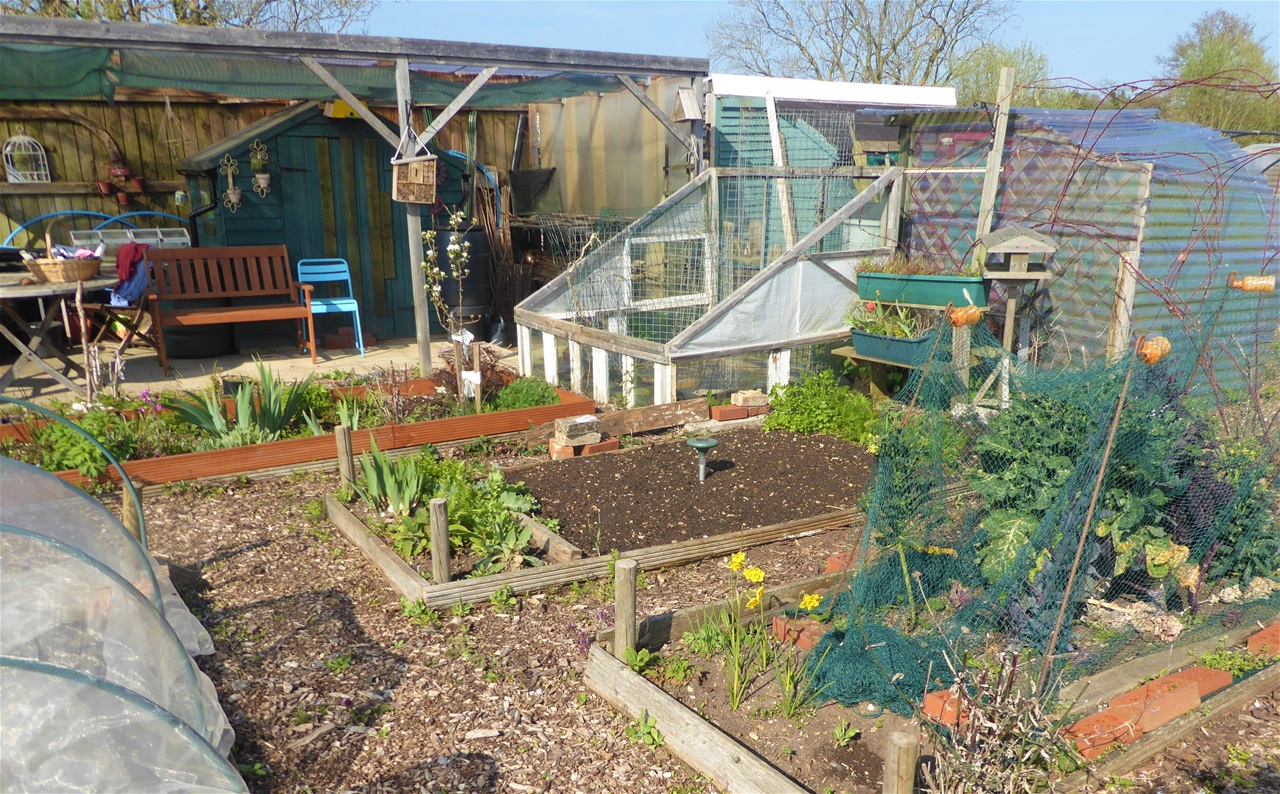

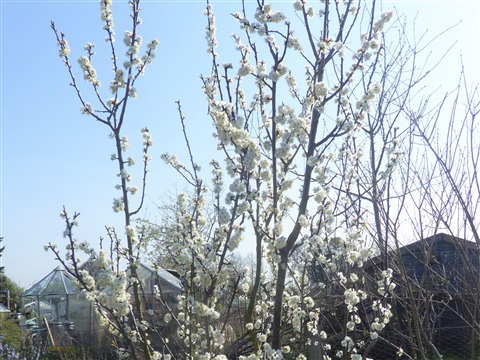
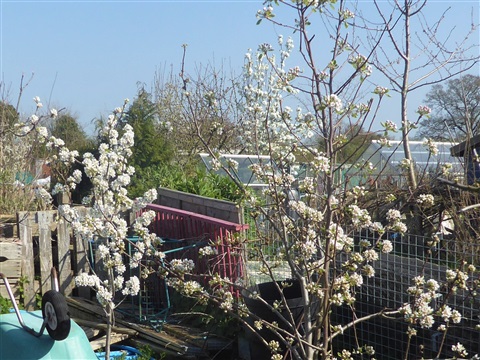
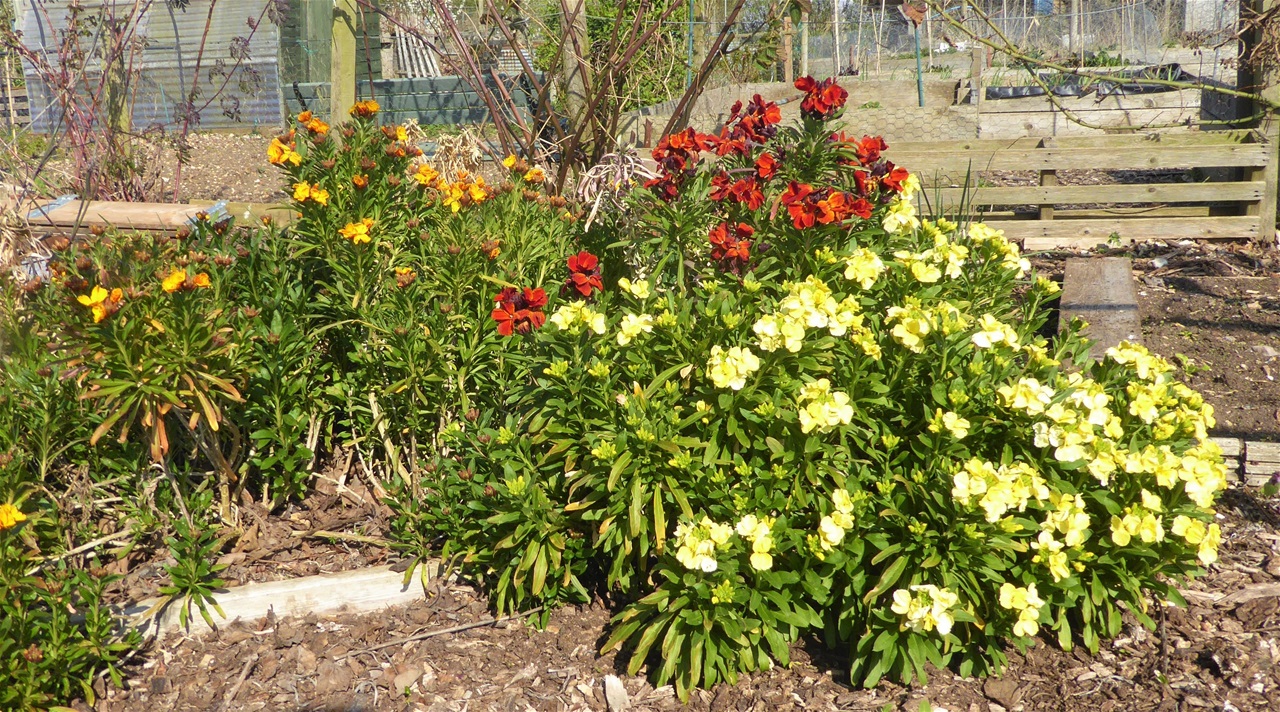
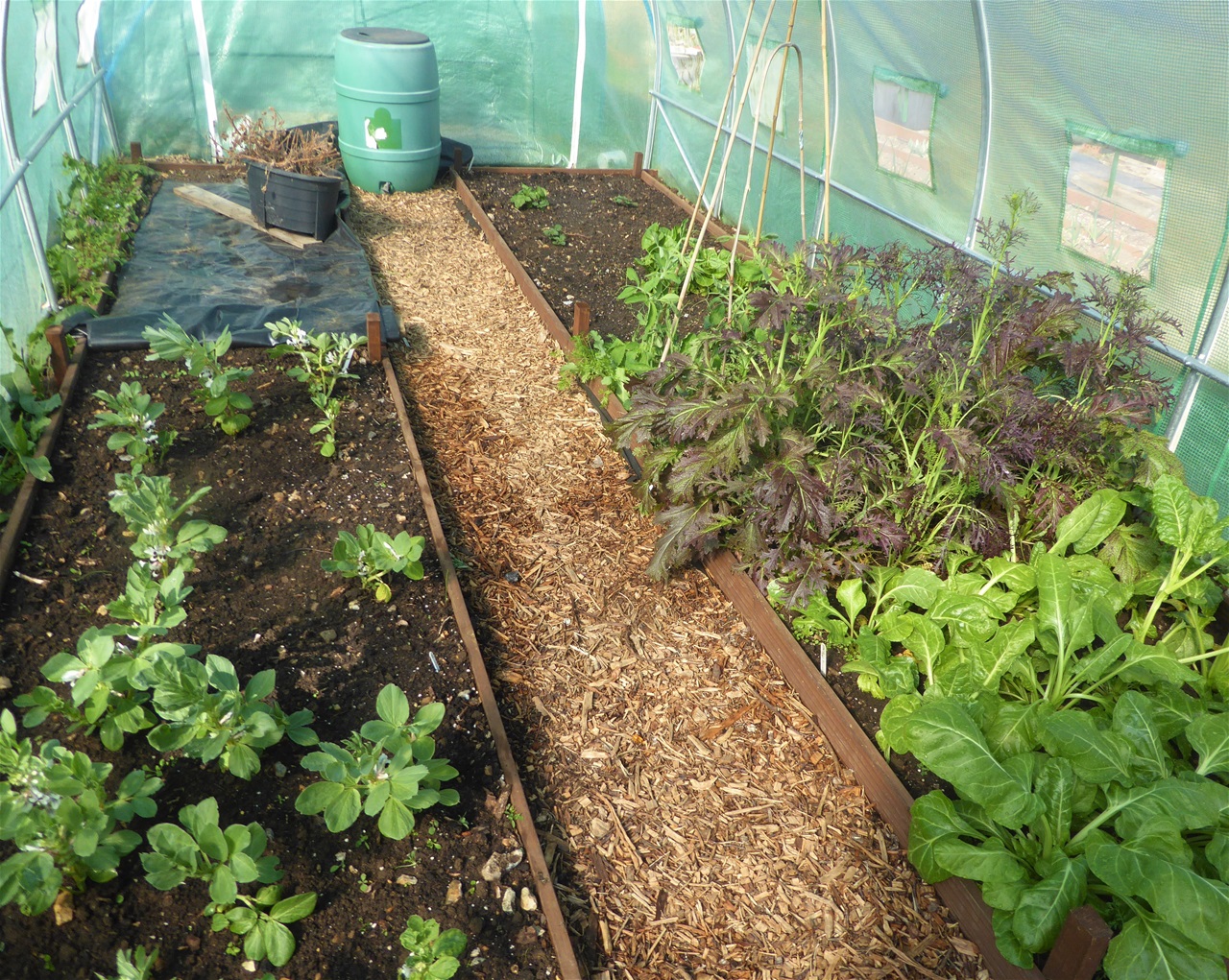
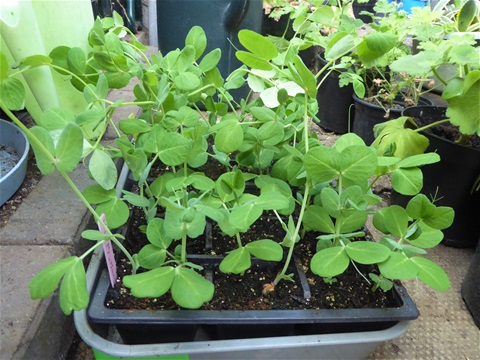
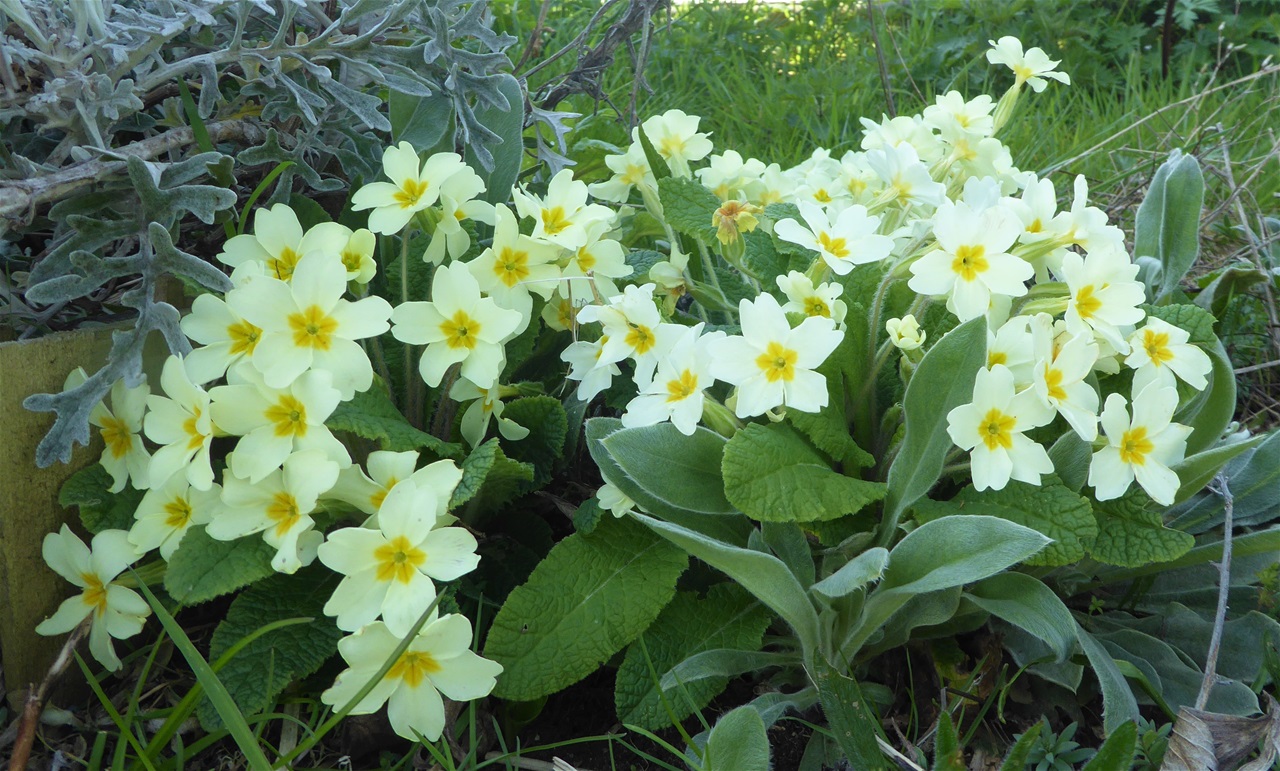
Kathy
I had just finished weeding Dave... weeds will spring up again as soon as we have rain again I am sure!
Dave@HappyAcres
Your garden looks so neat and clean. I only wish mine looked half as good. Those Little Gems look picture perfect! The onion and garlic look healthy too.
Kathy
Still edible though, once "trimmed up"! I do find the hairy roots all over them quite funny though
Michelle
My overwintered carrots are looking like yours, worse actually, but they're still edible. You have so many wonderful things going on in your garden.
Kathy
The polytunnels are indeed a great addition as they extend the season at both ends as well as provide Winter protection for hardy crops to bring them on earlier and more lush. Lots to eat!!
Mark Willis
Your plot is fabulously productive, Kathy! I'm very envious of the polytunnel, which must be a big boon to you.
Dave@HappyAcres
Our asparagus has emerged just in time to fill our Hungry Gap. The rhubarb crumble sounds yummy. I do wish I could grow it here, but it's never done well for me. I love those fresh eggs too!
Kathy
I like that lots of our varieties are also grown in other countries, but sometimes am a little envious of your local ones!
Dave@HappyAcres
The first lettuce is indeed special! Winter Density is one that does well here for me too.
Kathy
These ones have been excellent, not too spicy to eat raw and great cooked too, similar to a turnip but a little sweeter
Michelle
I love those colorful winter radishes. Their looks can be deceiving, mine were all mild and sweet this year and such a treat in the middle of winter.